#Jewish Publication Society 1917
Text

To You I Lift Up My Soul
1 [A Psalm] of David.
א
Unto Thee, O LORD, do I lift up my soul.
ב
2 O my God, in Thee have I trusted, let me not be ashamed;
Let not mine enemies triumph over me.
ג
3 Yea, none that wait for Thee shall be ashamed;
They shall be ashamed that deal treacherously without cause.
ד
4 Show me Thy ways, O LORD;
teach me Thy paths.
הו
5 Guide me in Thy truth, and teach me;
For Thou art the God of my salvation; For Thee do I wait all the day.
ז
6 Remember, O LORD, Thy compassions and Thy mercies;
For they have been from of old.
ח
7 Remember not the sins of my youth, nor my transgressions;
According to Thy mercy remember Thou me, For Thy goodness’ sake, O LORD.
ט
8 Good and upright is the LORD;
Therefore doth He instruct sinners in the way.
י
9 He guideth The humble in justice;
And He teacheth the humble His way.
כ
10 All the paths of the LORD are mercy and truth
Unto such as keep His covenant and His testimonies.
ל
11 For Thy name’s sake, O LORD,
Pardon mine iniquity, for it is great.
מ
12 What man is he that feareth the LORD?
Him will He instruct in the way that He should choose.
נ
13 His soul shall abide in prosperity;
And his seed shall inherit the land.
ס
14 The counsel of the LORD is with them that fear Him;
And His covenant, to make them know it.
ע
15 Mine eyes are ever toward the LORD;
For He will bring forth my feet out of the net.
פ
16 Turn Thee unto me, and be gracious unto me;
For I am solitary and afflicted.
צ
17 The troubles of my heart are enlarged;
O bring Thou me out of my distresses.
ר
18 See mine affliction and my travail;
And forgive all my sins.
19 Consider how many are mine enemies,
And the cruel hatred wherewith they hate me.
ש
20 O keep my soul, and deliver me;
Let me not be ashamed, for I have taken refuge in Thee.
ת
21 Let integrity and uprightness preserve me,
Because I wait for Thee.
22 Redeem Israel, O God, out of all his troubles.
— Psalm 25 | JPS Tanakh 1917 (JPST)
The Holy Scriptures according to the Masoretic text; Jewish Publication Society 1917.
Cross References: Genesis 49:18; Exodus 33:13; Exodus 34:9; 2 Chronicles 2:12; Psalm 3:1; Psalm 4:1; Psalm 13:4; Psalm 23:6; Psalm 27:14; Psalm 31:9; Psalm 40:12; Psalm 41:12; Psalm 44:26; Psalm 51:5; Psalm 64:10; Psalm 77:9; Psalm 86:4; Proverbs 1:33; Isaiah 30:21; Lamentations 1:9; Micah 4:2; John 7:17
#seeking#seek#God#troubled times#Psalm 25#Book of Psalms#Old Testament#JPST#JPS Tanakh 1917#Jewish Publication Society 1917
15 notes
·
View notes
Text
Palestine Masterlist
Introduction to Palestine:
Decolonize Palestine:
Palestine 101
Rainbow washing
Frequently asked questions
Myths
IMEU (Institute for Middle East Understanding):
Quick Facts - The Palestinian Nakba
The Nakba and Palestinian Refugees
The Gaza Strip
The Palestinian catastrophe (Al-Nakba)
Al-Nakba (documentary)
The Hundred Years’ War on Palestine: A History of Settler Colonialism and Resistance, 1917-2017 (book)
The Ethnic Cleansing of Palestine (book)
Nakba Day: What happened in Palestine in 1948? (Article)
The Nakba did not start or end in 1948 (Article)
Donations and charities:
Al-Shabaka
Electronic Intifada
Adalah Justice Project
IMEU Fundraiser
Medical Aid for Palestinians
Palestine Children’s Relief Fund
Addameer
Muslim Aid
Palestine Red Crescent
Gaza Mutual Aid Patreon
Books:
A New Critical Approach to the History of Palestine
The Idea of Israel: A History of Power and Knowledge
Hidden Histories: Palestine and the Eastern Mediterranean
The Balfour Declaration: Empire, the Mandate and Resistance in Palestine
Queer Palestine and the Empire of Critique
From Haven to Conquest: Readings in Zionism and the Palestine Problem until 1948
Captive Revolution - Palestinian Women's Anti-Colonial Struggle within the Israeli Prison System
Palestine: A Four Thousand Year History
Except for Palestine: The Limits of Progressive Politics
Before Their Diaspora: A Photographic History of The Palestinians 1876-1948
The Battle for Justice in Palestine Paperback
Uncivil Rites: Palestine and the Limits of Academic Freedom
Palestine Rising: How I survived the 1948 Deir Yasin Massacre
The Transformation of Palestine: Essays on the Origin and Development of the Arab-Israeli Conflict
A Land Without a People: Israel, Transfer, and the Palestinians 1949-1996
The Iron Cage: The Story of the Palestinian Struggle for Statehood
A History of Modern Palestine: One Land, Two Peoples
Where Now for Palestine?: The Demise of the Two-State Solution
Terrorist Assemblages - Homonationalism in Queer Times
Militarization and Violence against Women in Conflict Zones in the Middle East
The one-state solution: A breakthrough for peace in the Israeli-Palestinian deadlock
The Persistence of the Palestinian Question: Essays on Zionism and the Palestinians
Fateful Triangle: The United States, Israel and the Palestinians
The False Prophets of Peace: Liberal Zionism and the Struggle for Palestine
Ten myths about Israel
Blaming the Victims: Spurious Scholarship and the Palestinian Question
Israel and its Palestinian Citizens - Ethnic Privileges in the Jewish State
Palestinians in Israel: Segregation, Discrimination and Democracy
Greater than the Sum of Our Parts: Feminism, Inter/Nationalism, and Palestine
Palestine Hijacked
Palestinian Culture:
Mountain against the Sea: Essays on Palestinian Society and Culture
Palestinian Costume
Traditional Palestinian Costume: Origins and Evolution
Tatreez & Tea: Embroidery and Storytelling in the Palestinian Diaspora
Embroidering Identities: A Century of Palestinian Clothing (Oriental Institute Museum Publications)
The Palestinian Table (Authentic Palestinian Recipes)
Falastin: A Cookbook
Palestine on a Plate: Memories from My Mother's Kitchen
Palestinian Social Customs and Traditions
Palestinian Culture before the Nakba
Tatreez & Tea (Website)
The Traditional Clothing of Palestine
The Palestinian thobe: A creative expression of national identity
Embroidering Identities:A Century of Palestinian Clothing
Palestine Traditional Costumes
Palestine Family
Palestinian Costume
Encyclopedia of World Dress and Fashion, v5: Volume 5: Central and Southwest Asia
Tent Work in Palestine: A Record of Discovery and Adventure
Documentaries, Films, and Video Essays:
Jenin, Jenin
Born in Gaza
GAZA
Wedding in Galilee
Omar
5 Broken Cameras
OBAIDA
Indigeneity, Indigenous Liberation, and Settler Colonialism (not entirely about Palestine, but an important watch for indigenous struggles worldwide - including Palestine)
Edward Said - Reflections on Exile and Other Essays
Palestine Remix:
AL NAKBA
Gaza Lives On
Gaza we are coming
Lost cities of Palestine
Stories from the Intifada
Last Shepherds of the Valley
Voices from Gaza
Muhammad Smiry
Najla Shawa
Nour Naim
Wael Al dahdouh
Motaz Azaiza
Ghassan Abu Sitta
Refaat Alareer (murdered by Israel - 12/7/2023. Inna lillahi wa inna ilayhi raji'un)
Plestia Alaqad
Bisan Owda
Ebrahem Ateef
Mohammed Zaanoun
Doaa Mohammad
Hind Khoudary
Palestinian Voices, Organizations, and News
Boycott Divest and Sanction (BDS)
Defense for Children in Palestine
Palestine Legal
Palestine Action
Palestine Action US
United Nations relief and works for Palestinian refugees in the Middle East (UNRWA)
National Students for Justice in Palestine (SJP)
Times of Gaza
Middle East Eye
Middle East Monitor
Mohammed El-Kurd
Muna El-Kurd
Electronic Intifada
Dr. Yara Hawari
Mariam Barghouti
Omar Ghraieb
Steven Salaita
Noura Erakat
The Palestinian Museum N.G.
Palestine Museum US
Artists for Palestine UK
Eye on Palestine
#Palestine#free palestine#palestine masterlist#apartheid#settler colonialism#links#donation post#BDS#Middle East#Palestinian liberation#palestinian culture#long post#resources#dcip#gaza
52K notes
·
View notes
Text
If you were an independent, adventurous, liberated American woman in the 1920s or 1930s where might you have sought escape from the constraints and compromises of bourgeois living? Paris and the Left Bank quickly come to mind. But would you have ever thought of Russia and the wilds of Siberia? This choice was not as unusual as it seems now. As Julia L. Mickenberg uncovers in American Girls in Red Russia, there is a forgotten counterpoint to the story of the Lost Generation: beginning in the late nineteenth century, Russian revolutionary ideology attracted many women, including suffragists, reformers, educators, journalists, and artists, as well as curious travelers. Some were famous, like Isadora Duncan or Lillian Hellman; some were committed radicals, though more were just intrigued by the “Soviet experiment.” But all came to Russia in search of social arrangements that would be more equitable, just, and satisfying. And most in the end were disillusioned, some by the mundane realities, others by horrifying truths.
Mickenberg reveals the complex motives that drew American women to Russia as they sought models for a revolutionary new era in which women would be not merely independent of men, but also equal builders of a new society. Soviet women, after all, earned the right to vote in 1917, and they also had abortion rights, property rights, the right to divorce, maternity benefits, and state-supported childcare. Even women from Soviet national minorities—many recently unveiled—became public figures, as African American and Jewish women noted. Yet as Mickenberg’s collective biography shows, Russia turned out to be as much a grim commune as a utopia of freedom, replete with economic, social, and sexual inequities.
American Girls in Red Russia recounts the experiences of women who saved starving children from the Russian famine, worked on rural communes in Siberia, wrote for Moscow or New York newspapers, or performed on Soviet stages. Mickenberg finally tells these forgotten stories, full of hope and grave disappointments.
5 notes
·
View notes
Text
Argument with an older white atheist on Facebook.

Apologies for this tangent away from cool anime discussion but if you've followed this Tumblr long enough you know I do sometimes dive into US politics, etc. because besides being an anime fan I'm also a news junkie, a librarian, and also an unabashed lefty. I'm also a secular humanist and an atheist and moreover lean towards anti-theism, e.g. the philosophical view that in the main religion does more harm than good in society. That said, I'm not always in agreement with some of my fellow atheists, especially other older white guys (and especially those of a more libertarian-ish bent of which there are far too goddamn many online ready to mansplain themselves to anyone in virtual earshot and who look at a civil servant like me as some kind of wannabe Jack Booted Government Thug {JBGT (tm) } .
Anyway, I'm Facebook friends with one of these old codgers who uses an alias on Facebook and I think his main online identity is that of the "Atheist Camel", and he was having a moral panic attack over the singing of the so-called "Black National Anthem" and going right into a slippery slope argument (an assertion without evidence) of "oh god what next, the Jewish National Anthem? The Chicano National Anthem? The AAPI National Anthem?"
Meanwhile I'm like DUDE....back the fuck up and calm down. The name of the song is "Lift Every Voice and Sing" and is a hymn with lyrics by James Weldon Johnson (1871–1938) and set to music by his brother, J. Rosamond Johnson (1873–1954). Written from the context of African Americans in the late 19th century, the hymn is a prayer of thanksgiving as well as a prayer for faithfulness and freedom, with imagery that evokes the biblical Exodus from slavery to the freedom of the "promised land." {per Wikipedia}
{also per Wikipedia} After its first recitation in 1900, "Lift Every Voice and Sing" was communally sung within Black communities, while the NAACP began to promote the hymn as a "Negro national anthem" in 1917 (with the term "Black national anthem" similarly used in the present day)
AND: {per Wikipedia}
The use of the term "the Black national anthem" in reference to "Lift Every Voice and Sing" has been criticized. Timothy Askew, an associate professor at the historically Black Clark Atlanta University, argued that the use of the term "Black national anthem" could incorrectly implicate a desire of separatism by Black communities, that the lyrics of the hymn do not overtly refer to any specific race (which has inspired people to perform it outside African American communities), and "identity should be developed by the individual himself, not by a group of people who think they know what is best for you."[11] Some Conservative commentators have similarly criticized performances and references to "Lift Every Voice and Sing" as the "Black national anthem" as separatist and diminishing to "The Star-Spangled Banner" as the national anthem of the United States.[12][13]
SIDEBAR: Francis Scott Key owned slaves and his own views on the institution of slavery were nuanced but he ultimately wound up opposing abolition and felt black slaves should be returned to Africa instead.
{again per Wikipedia}
In response to Askew's remarks, the NAACP's then-senior vice president of advocacy and policy Hilary O. Shelton told CNN that the hymn "was adopted and welcomed by a very interracial group, and it speaks of hope in being full first-class citizens in our society", used in conjunction with the U.S. national anthem or the Pledge of Allegiance during public events, "It is evident in our actions as an organization and here in America it is evidence that we are about inclusion, not exclusion. To claim that we as African-Americans want to form a confederation or separate ourselves from white people because of one song is baffling to me."[11]
I posted a link to this full article referenced above on Atheist Camel's Facebook post's comment section and told him to go read it before going off half-cocked like that. He berated me as an idiot with nothing useful to say. I replied that if he refused to actually read the article and have a rational discussion then I had to reluctantly agree (that I had nothing useful to say). He didn't care about truth, he cared about being mad and being "right", in his own mind.
He got defensive and said he wasn't a right-winger or a FOX News Viewer...which immediately brought this little scene to my mind as a reply....
You will be. YOU WILL BE.
0 notes
Text
Boris Pasternak, the composer: Piano Sonata in B Minor (sheet music)
Boris Pasternak, the composer: Piano Sonata in B Minor (sheet music)
Boris Pasternak, the composer?Musical Works of Boris Pasternak
Selected books by PasternakPoetry collections
Books of prose
Please, subscribe to our Library. Thank you!
Best Sheet Music download from our Library.
Boris Pasternak, the composer: Piano Sonata in B Minor (sheet music)
https://dai.ly/x80r0qr
Boris Pasternak, the composer?
Russian poet and author, he is one of the most significant figures in Russian literature.
Boris Pasternak was born on February 10, 1890, in Moscow, into a cultured family of Jewish origin and studied at the universities of Moscow and Marburg (Germany). He also studied music during his youth, although he abandoned it to pursue poetry. His first book of poems was The twin between the clouds (1914), which was followed by others, such as Above the barriers (1917), My sister, life (1922) and The second birth (1932).
Although the influence of late 19th century symbolism, with its emphasis on mysticism, pure aesthetics, and impressionism, is evident in his work, these poems reveal a new aesthetic based especially on unusual image associations and a philosophical look at nature and history.
These works consecrated him as a magnificent Russian poet of his time, although communist-leaning literary critics reproached him for not following the line established by socialist realism, which meant that after 1932 he was able to publish only two collections of poems, On morning trains (1943) and The vastness of the earth (1945).
Boris Pasternak had to make a living carrying out quite remarkable translations of the works of Shakespeare, Goethe and Verlaine. His only novel, Doctor Zhivago (originally published in Italy in 1957), was rejected by Soviet publishers for its veiled critique of communism in their country, but earned international recognition after its publication in the West, to the point that it became to be translated into 18 languages and adapted for the cinema.
The novel tells a story of wandering, spiritual isolation, and love, and presents a panoramic view of Russian society in the years of the 1917 Revolution. The protagonist, Dr. Zhivago, is an intellectual whose sincerity, religious convictions, and independence of spirit they clash head-on with the theory and practice of the Soviet regime.
Boris Pasternak won and accepted the Nobel Prize in 1958, but was denounced as a traitor by various Soviet communist groups, after which he publicly announced his desire not to go into exile and refused the prize. He was the first to refuse this distinction.
The book was translated and published in Italy in 1957, the anger of the Soviet authorities increased the popularity of the book, which was published worldwide, and the CIA used it as a cultural weapon against the Soviets.
Pasternak's post-success work insists on the universal questions of love, immortality, and reconciliation with God. The poems in his last collection, which he wrote until his death, are possibly the most appreciated and well-known of his production.
Boris Pasternak died on May 30, 1960, near Moscow. Doctor Zhivago was finally published in the Soviet Union in 1987 due to President Mikhail Gorbachev's newly inaugurated “openness” (Russian: glasnost) policy, and its author was officially rehabilitated. Among his other works are the autobiography Safe Conduct (1931) and a memoir published in 1957.
Musical Works of Boris Pasternak
- Andante in G sharp minor (1)
- Con moto in D sharp minor (1)
- Piano Sonata (3)
- Prelude in E flat minor (3)
- Prelude in G sharp minor (3)
- Preludes
Selected books by Pasternak
Poetry collections
- Twin in the Clouds (1914)
- Over the Barriers (1916)
- Themes and Variations (1917)
- My Sister, Life (1922)
- On Early Trains (1944)
- Selected Poems (1946)
- Poems (1954)
- When the Weather Clears (1959)
- In The Interlude: Poems 1945–1960 (1962)
Books of prose
- Safe Conduct (1931)
- Second Birth (1932)
- The Last Summer (1934)
- Childhood (1941)
- Selected Writings (1949)
- Collected Works (1945)
- Goethe's Faust (1952)
- Essay in Autobiography (1956)
- Doctor Zhivago (1957)
Read the full article
0 notes
Text
Miro painter

#MIRO PAINTER FULL#
#MIRO PAINTER SERIES#
Such works illustrate the development of a personal style which challenges both traditional and vanguard artistic values. A number of Miró’s experiments with avant-garde pictorial styles, such as the Cezannist “La Publicidad” and Flower Vase (1917) and the Fauve-inspired Portrait of Enric Cristòfol Ricart (1917), are included in this section. Joan Miró begins in 1915, with paintings that predate the artist’s first trip to Paris. These paintings, of an often startling expressivity, have never been seen in the United States. Also included is a selection of works left in Miró’s studio at his death.
#MIRO PAINTER SERIES#
All twenty-three works of the Constellation series of 1940–41, a pivotal group of paintings on paper that shows the artist at the height of his career, are exhibited together for the first time. Among the many series represented is the group of so-called dream paintings from the 1920s, twenty-one of which are included in the exhibition. It comprises more than 150 paintings, as well as drawings, prints, sculptures, ceramics, and illustrated books, assembled from public and private collections from throughout the world. Joan Miró, which can only be seen in New York, is installed chronologically on both levels of the Museum’s temporary exhibition galleries.
#MIRO PAINTER FULL#
Joan Miró thus examines the full range of Miró’s oeuvre, offering an unprecedented opportunity to chart the development of one of the twentieth-century’s most innovative artists, as well as providing insight into the creative process itself. The exhibition is the first major survey to examine the artist’s pervasive tendency to work in series, and represents nearly all of his major cycles. The largest and most comprehensive exhibition ever held in the United States of the work of the Catalan master Joan Miró (1893–1983), Joan Miró celebrates the 100th anniversary of the artist’s birth with some 400 works in virtually all the mediums he employed. Yes, indeed, one can speak of cycles in my painting.” -Joan Miró, Selected Writings and Interviews, 1970 After a series of calm austere pictures there will by colorful dynamic ones. When I am traveling, I am always on the move, but when I return home I spend twenty-four hours in bed, I eat nothing, I drink only water. Both my life and my work are governed by alternating phases. Inspired by Fauve and Cubist exhibitions in Barcelona and abroad, Miró was drawn towards the arts community that was gathering in Montparnasse and in 1920 moved to Paris, but continued to spend his summers in Catalonia.“One thing comes as a reaction to something else. He studied at the Cercle Artístic de Sant Lluc and he had his first solo show in 1918 at the Galeries Dalmau, where his work was ridiculed and defaced. To the dismay of his father, he enrolled at the fine art academy at La Llotja in 1907. He began drawing classes at the age of seven at a private school at Carrer del Regomir 13, a medieval mansion. His father was Miquel Miró Adzerias and his mother was Dolors Ferrà. The Miró surname indicates possible Jewish roots (in terms of marrano or converso Iberian Jews who converted to Christianity). Spanish Artist Miró Joan Painting Joan Miró Biographyīorn into a family of a goldsmith and a watchmaker, Miró grew up in the Barri Gòtic neighborhood of Barcelona. In numerous interviews dating from the 1930s onwards, Miró expressed contempt for conventional painting methods as a way of supporting bourgeois society, and declared an “assassination of painting” in favour of upsetting the visual elements of established painting. His difficult to classify works also had a manifestation of Catalan pride. He was notable for his interest in the unconscious or the subconscious mind, reflected in his re-creation of the childlike. A museum dedicated to his work, the Fundació Joan Miró, was established in his native city of Barcelona in 1975, and another, the Fundació Pilar i Joan Miró, was established in his adoptive city of Palma de Mallorca in 1981.Įarning international acclaim, his work has been interpreted as Sur realism but with a personal style, sometimes also veering into Fauvism and Expressionism. Joan Miró i Ferrà was a Spanish painter, sculptor and ceramicist born in Barcelona.

0 notes
Text
Anti-communism and anti-Semitism have been linked since Karl Marx, who was Jewish, published the Communist Manifest in 1848. However, it wasn’t until the October Revolution of 1917 and the rise of the USSR that anti-communism and anti-Semitism began to shape every single aspect of America’s domestic and foreign policy, a practice which certainly continues to this day.
In the 1930s, Hitler hired American newspaper owner William Randolph Hearst, who by the mid-1920s owned 28 newspapers, including the New York Morning Journal, Los Angeles Examiner, Chicago Examiner, and Washington Times, to publish pro-Nazi pieces in these newspapers. In addition to these newspapers, Hearst also owned Cosmopolitan and Harper’s Bazaar, as well as a number of newsreels and film studios (he would add several television channels to his corporation in the 1950s), making him the most far-reaching media figure in the country at the time. Hitler paid Hearst $400,000 annually (roughly $8 million/year today) to print articles written by him and his bureau of propagandists to uphold Nazism as the antidote to communism. As part of this project, Hearst became one of the chief architects of the myth of the Ukrainian famine, publishing a number of articles by a man named Thomas Walker, who claimed to have witnessed the famine in the spring of 1934. These articles were accompanied by photos Walker had claimed to have taken on starving children in various parts of the Ukrainian region of the USSR. Walker, however, was quickly revealed to actually be a man named Robert Green who had. lengthy history of forgery, fraud, and trafficking young women for the purpose of sex. During his trial in the US, every single shred of his evidence of this supposed Ukrainian genocide was determined to have been falsified.
Although these articles were debunked and this lie about the 1932-33 famine would not emerge again until the 1980s, Hearst’s publication of them contributed to the Nazi creation of the term “Judeo Bolshevism,” which claimed that Jewish people were leading the USSR with the purpose of destroying capitalism and taking over the world in order to enrich themselves. Hearst, then, provided the millions of anti-Semitic Americans a means of moralizing their anti-Semitism through linking it to the so-called evils of communism. Suddenly, then, the destruction of the USSR and communism as a whole became a moral imperative for America. The complete destruction wrought by the dropping of atomic bombs on Hiroshima and Nagasaki, as well as the Korean War, the Vietnam War, and the destruction of the USSR were explained as a necessary price to pay for the moral superiority of capitalism.
The re-branding of American anti-Semitism as anti-communism enabled the liberals in American society to distance capitalism in words from fascism and Nazism more specifically. The rebranding of “Judeo Bolshevism” as “cultural Marxism” has helped further obscure the fact that anti-communism is inextricable from anti-Semitism, allowing anti-communist propaganda to serve as the basis for American political education as a whole.
This manufactured, deliberate equation of communism with anti-Jewish conspiracy theories is why it’s so, so important to check anti-Communist sources. I guarantee they will always lead you back to somebody like William Hearst, either a Nazi or a Nazi collaborator.
The information in this post was taken from the following sources:
Douglas Tottle, Fraud, Famine and Fascism: The Ukrainian Genocide Myth from Hitler to Harvard (Canada: Progress Books, 1987).
David Nasaw, The Chief: The Life of William Randolph Hearst (United States: Houghton Mifflin Harcourt, 2013).
Kathryn S. Olmsted, The Newspaper Axis: Six Press Barons Who Enabled Hitler (New Haven: Yale University Press, 2022).
Amiad Hrowitz, “Right wing fuses anti-Semitism with anti-communism in its conspiracy theories,” People’s World, October 9, 2020, https://peoplesworld.org/article/right-wing-fuses-anti-semitism-with-anti-communism-in-its-conspiracy-theories/.
14 notes
·
View notes
Text

Babel and Babylon Refer to the Same Place
By Bible Researcher Eli Kittim 🔎
Definition & Location
Babel is a transliteration of the Hebrew word בָּבֶל (Ba-bel), while Babylon is derived from the Greek Βαβυλῶνος (Babylonos). In the Old Testament, the word “Babel” is most often translated as “Babylon” in Greek! But besides the linguistic connection, there’s further evidence that both Babel & Babylon are located in the exact same place. For example, Genesis 10.10 & 11.2 locate Babel in the land of Shinar (שִׁנְעָֽר׃). Astoundingly, Daniel 1.2 tells us that Babylon is also located in the land of Shinar (שִׁנְעָ֖ר)! This means that Babel and Babylon are synonymous or interchangeable terms!
The Septuagint & Most English Bibles Translate Babel As Babylon
The Hebrew term “Babel” is most often translated as “Babylon” (Βαβυλὼν) in the Septuagint (aka LXX; L.C.L. Brenton translation), an early Greek translation of the Hebrew Bible. Below are the English Bible versions that *also* translate Babel as Babylon:
Gen. 10.10 (LXX, NIV); Gen. 11.9 (CSB,
HCSB, ISV); Ps. 87.4 (LXX & Most Versions);
Ps. 137.1 (LXX & Most Versions); Ps. 137.8
(LXX & Most Versions); Ezek. 12.13 (LXX &
Most Versions); Ezek. 19.9 (LXX & Most
Versions).
Even the JPS Tanakh 1917—-the Jewish Publication Society of America——often translates Babel as Babylon!
In the Greek, Babel is called Βαβυλῶνος, a term that is derived from the word Βαβυλών (Babylon). The Greek New Testament follows the Septuagint translation of rendering Babel as Babylon (see e.g. Mt 1.11-12, 17; cf. 2 Kings 24.8-10 LXX)!
Conclusion
So, if Babel & Babylon are one and the same, and if Babylon the Great——with its high towers & powerful economy——is said to be destroyed in the end-times (Rev. 18), then Babel’s apparent destruction (in Genesis 11) must also be prophetic rather than historical!
—
#babel#Babylon#JPSTanakh1917#tower of babel#Βαβυλῶνος#Shinar#Bible concordance#septuagint#lxx#babylon the great#genesis11#thelittlebookofrevelation#ελικιτίμ#το μικρό βιβλίο της αποκάλυψης#bibleprophecy#eschatology#apocalyptic#ek#bibleexegesis#biblicalinterpretation#end times prophecy#ΠύργοςτηςΒαβέλ#προφητεία#EliKittim#bible translation#apocalypse#biblestudy#biblicallanguages#בָּבֶ֔ל#εκ
9 notes
·
View notes
Text

I saw this posted on Twitter today.
It reminded me of a comment from someone I’m stuck knowing. He, like many people I know, is a KJV-onlyist. He was upset about Psalm 68:11.
Many recent translations reference women in the verse. Now, they don't just dislike those for their KJV-onlyist views, but for their sexism.
There's just a few problems. The Hebrew references women. The Jewish Publication Society's Tanakh of 1917 uses "women" in it. So for that matter does the 1587 Geneva Bible, considered to be the first "Reformed" Bible.
Further, the cross references from various Bible commentaries (cited in the Treasury of Scripture Knowledge, which the guy and those like him recommend) reference Miriam and the women in Exodus, Deborah and Barak in Judges, and women playing instruments in Psalms!
2 notes
·
View notes
Text
And suddenly, one of those who were with Jesus stretched out his hand and drew his sword, struck the servant of the high priest, and cut off his ear. Then Jesus said to him, “Put your sword in its place, for all who take the sword will perish by the sword. Or do you think that I cannot now pray to My Father, and He will provide Me with more than twelve legions of angels?”
Matthew 26:51–53
Therefore My Father loves Me, because I lay down My life that I may take it again. No one takes it from Me, but I lay it down of Myself. I have power to lay it down, and I have power to take it again. This command I have received from My Father.
John 10:17,18
I am poured out like water, and all My bones are out of joint; My heart is like wax; it has melted within Me. My strength is dried up like a potsherd, and My tongue clings to My jaws; You have brought Me to the dust of death. For dogs have surrounded Me; the assembly of the wicked has enclosed Me. They pierced My hands and My feet; I can count all My bones. They look and stare at Me.
Psalm 22 (King James Version)
I am poured out like water, and all my bones are out of joint; my heart is become like wax; it is melted in mine inmost parts. My strength is dried up like a potsherd; and my tongue cleaveth to my throat; and Thou layest me in the dust of death. For dogs have encompassed me; a company of evil-doers have inclosed me; like a lion, they are at my hands and my feet. I may count all my bones; they look and gloat over me.
Psalm 22 (Jewish Publication Society (JPS), trans. of the Hebrew Bible, 1917)
Notice that the English translation from the original Hebrew does not contain the word “pierced.” The King James version deliberately mistranslated the Hebrew word kaari (כָּאֲרִי) as “pierced,” rather than “like a lion,” thereby drawing the reader to a false conclusion that this Psalm is describing the Crucifixion. The Hebrew word כָּאֲרִי does not mean pierced but plainly means “like a lion. The end of Psalm 22:17, therefore, properly reads “like a lion they are at my hands and my feet.”
Tovia Singer, “A Closer Look at the ‘Crucifixion Psalm’”
Ps 22:17b. is a half-verse that has received considerable attention of late. No less than three recent articles in JBL have presented various solutions to the quandary proposed by the words כָּאֲרִי, יָדַי וְרַגְלָי , literally, “like a lion, my hands and my feet.” […] The first two stichs read: “for dogs surround me, a pack of evildoers encircles me,” after which follows the problematic “like a lion, my hands and my feet.” The absence of a verb indicates the suddenness with which the attack comes. We experience the anguish of the psalmist, he is surrounded by enemies, and suddenly, the pounce, and the immediate cry about hands and feet under attack.
Gary A. Rendsburg, “Hebrew Philological Notes (III)”, Hebrew Studies.
Beck: I am curious about your translation of theos as “daimon” instead of “god.” Can you describe the process by which you came to this translation? Did you have a particular use of this word in another ancient source in mind when you were thinking of using “daimon”?
(No response was sent by Carson to this question.)
Melissa Considine Beck, My Pythian Interview with Anne Carson
I stole from you, while you were playing, honey-sweet Iuventius,
a kiss more sweet than sweet ambrosia.
Truly I did not lift this unpunished: for such a long hour
I remember that I was crucified on the highest cross,
while I purged myself to you, nor was I able to remove
with any tears so small a quantity of your ferocity.
For at the same time it was done, you wiped
your lips, having been washed by many tears, with all your fingers,
nor did anything having been received from my mouth remain,
just as if it were the filthy spit of a filthy prostitute.
Besides this, to hand over lovesick me, you did not hold back
from troubled love, and to torture in every way,
with the result that for me that kiss changed from ambrosia
to more bitter than bitter hellebore.
Because you put forth such a punishment for miserable love,
I will never steal a kiss after this.
Catullus, Carmen 99
In any case, there is no shortage of scholarship that simply and confidently names Juventius as the lover or boyfriend of Catullus. This paper will contend that the Juventius poems of Catullus have been radically misread and that the poems show no evidence of a reciprocal relationship between the two. [...] To the extent there is a sexual history for Juventius, it is with other people, men he seems to prefer to Catullus. [...] I argue that the most sensible reading of this poem is that Catullus saw flirting where there was none and a close amour whether there was only casual acquaintance.
Catullus and Juventius
Ōdī et amō. Quārē id faciam fortasse requīris.
Nesciŏ, sed fierī sentiō et excrucior.
Catullus, Carmen 85
It is always difficult for me to teacher Catullus Carmen 85 because, as his shortest poem—a mere two lines—the temptation is for students to translate it quickly and move on. But there are so many layers to this deceptively simple poem (translation is my own):
I hate you and I love you.
You may be wondering why I feel this way.
I have no idea.
But that’s how I feel.
And I. am. tortured.
[...] Bidart’s second version is Catullus: Excrucior which shifts focus to the end of Catullus’s Carmen-–that all powerful Latin word, excrucior, which literally means to be crucified.
Melissa Considine Beck, “Odi et Amo: Half-Light, The collected poems of Frank Bidart“
I hate and love. Ignorant fish, who even
wants the fly while writhing.
Frank Bidart, Catullus: Odi et Amo
I hate and—love. The sleepless body hammering a nail nails
itself, hanging crucified.
Frank Bidart, Catullus: Excrucior
What I hate I love. Ask the crucified hand that holds
the nail that now is driven into itself, why.
Frank Bidart, Catullus: Id Faciam
But the Psalms are not to be understood as some sort of linguistic valve, rather they address a person opposite: their language is demanding and challenging – and already for that reason it does not want to be matter-of-fact, because it is not a reporting language. That is why the Enemy Psalms with their ‘strong expressions’ are an important impetus for our language of prayer, in which lamenting and shouting out your fear are not exactly forbidden, yet silence under the pretext of trust in God. However, only a powerful language is really strong enough to express our deepest anxieties and carry these to where our hope of salvation lies – to the ear of God.
[...] Of course, salvation and liberation come at a price. They are not available without justice and ‘avengement’; that is, not without real or symbolic compensation. The anger about injustice and injury must be allowed to find expression, along with the desire that violence should be stopped and that the wicked should be called to account. Whoever rashly – perhaps even in the name of Christianity – demands forgiveness and love of enemy wants to take the last before he has taken the second-to-last. The Psalms, especially the Enemy Psalms, keep awake in our midst the awareness of injustice, of threat and violence. They insist that justice is an unrelinquishable postulate. And they live in the hope that things do not have to remain the way they are – even if those hopes contradict what they see in reality.
Ursula Silber, “’WHATEVER IS IN PARENTHESIS WE DO NOT INCLUDE IN OUR PRAYERS’!? THE PROBLEMATIC NATURE OF THE ‘ENEMY PSALMS’ IN CHRISTIAN RECEPTION”, European Judaism: A Journal for the New Europe.
7 notes
·
View notes
Text

Yahweh Calls Israel to Return to Him
1 If thou wilt return, O Israel,
Saith the LORD,
Yea, return unto Me;
And if thou wilt put away thy detestable things out of My sight,
And wilt not waver;
2 And wilt swear: ‘As the LORD liveth’
In truth, in justice, and in righteousness;
Then shall the nations bless themselves by Him,
And in Him shall they glory.
3 For thus saith the LORD to the men of Judah and to Jerusalem:
Break up for you a fallow ground,
And sow not among thorns.
4 Circumcise yourselves to the LORD,
And take away the foreskins of your heart,
Ye men of Judah and inhabitants of Jerusalem;
Lest My fury go forth like fire,
And burn that none can quench it,
Because of the evil of your doings.
5 Declare ye in Judah, and publish in Jerusalem,
And say: ‘Blow ye the horn in the land’;
Cry aloud and say:
‘Assemble yourselves, and let us go into the fortified cities.’
6 Set up a standard toward Zion;
Put yourselves under covert, stay not;
For I will bring evil from the north,
And a great destruction.
7 A lion is gone up from his thicket,
And a destroyer of nations
Is set out, gone forth from his place;
To make thy land desolate,
That thy cities be laid waste, without inhabitant.
8 For this gird you with sackcloth,
Lament and wail;
For the fierce anger of the LORD
Is not turned back from us.
9 And it shall come to pass at that day,
Saith the LORD,
That the heart of the king shall fail,
And the heart of the princes;
And the priests shall be astonished, And the prophets shall wonder.
10 Then said I: ‘Ah, Lord GOD! surely Thou hast greatly deceived this people and Jerusalem, saying: Ye shall have peace; whereas the sword reacheth unto the soul.’
11 At that time shall it be said of this people and of Jerusalem;
A hot wind of the high hills in the wilderness
Toward the daughter of My people,
Not to fan, nor to cleanse;
12 A wind too strong for this shall come for Me;
Now will I also utter judgments against them.
13 Behold, he cometh up as clouds,
And his chariots are as the whirlwind;
His horses are swifter than eagles.—
‘Woe unto us! for we are undone.’—
14 O Jerusalem, wash thy heart from wickedness,
That thou mayest be saved.
How long shall thy baleful thoughts
Lodge within thee?
15 For hark! one declareth from Dan,
And announceth calamity from the hills of Ephraim:
16 ‘Make ye mention to the nations:
Behold—publish concerning Jerusalem—
Watchers come from a far country,
And give out their voice against the cities of Judah.’
17 As keepers of a field
Are they against her round about;
Because she hath been rebellious against Me,
Saith the LORD.
18 Thy way and thy doings have procured
These things unto thee;
This is thy wickedness; yea, it is bitter,
Yea, it reacheth unto thy heart.
19 My bowels, my bowels! I writhe in pain!
The chambers of my heart!
My heart moaneth within me!
I cannot hold my peace!
Because thou hast heard, O my soul, the sound of the horn,
The alarm of war.
20 Destruction followeth upon destruction,
For the whole land is spoiled;
Suddenly are my tents spoiled,
My curtains in a moment.
21 How long shall I see the standard,
Shall I hear the sound of the horn?
22 For My people is foolish,
They know Me not;
They are sottish children,
And they have no understanding;
They are wise to do evil,
But to do good they have no knowledge.
23 I beheld the earth,
And, lo, it was waste and void;
And the heavens, and they had no light.
24 I beheld the mountains, and, lo, they trembled,
And all the hills moved to and fro.
25 I beheld, and, lo, there was no man,
And all the birds of the heavens were fled.
26 I beheld, and, lo, the fruitful field was a wilderness,
And all the cities thereof were broken down
At the presence of the LORD,
And before His fierce anger.
27 For thus saith the LORD:
The whole land shall be desolate;
Yet will I not make a full end.
28 For this shall the earth mourn,
And the heavens above be black;
Because I have spoken it, I have purposed it,
And I have not repented, neither will I turn back from it.
29 For the noise of the horsemen and bowmen
The whole city fleeth;
They go into the thickets,
And climb up upon the rocks;
Every city is forsaken,
And not a man dwelleth therein.
30 And thou, that art spoiled, what doest thou,
That thou clothest thyself with scarlet,
That thou deckest thee with ornaments of gold,
That thou enlargest thine eyes with paint?
In vain dost thou make thyself fair;
Thy lovers despise thee, they seek thy life.
31 For I have heard a voice as of a woman in travail,
The anguish as of her that bringeth forth her first child,
The voice of the daughter of Zion, that gaspeth for breath,
That spreadeth her hands:
‘Woe is me, now! for my soul fainteth
Before the murderers.’
— Jeremiah 4 | JPS Tanakh 1917 (JPST)
The Holy Scriptures according to the Masoretic text; Jewish Publication Society 1917.
Cross References: Genesis 1:2; Numbers 10:3; Numbers 23:19; Deuteronomy 4:30; 2 Samuel 1:23; 2 Kings 9:30; 2 Kings 25:1; 2 Kings 25:4; Nehemiah 9:31; Psalm 11:6; Psalm 42:7; Psalm 107:17; Isaiah 1:7; Isaiah 1:15; Isaiah 5:25; Isaiah 22:3; Isaiah 39:3; Isaiah 52:7; Isaiah 62:10; Jeremiah 9:10; Jeremiah 12:4; Jeremiah 12:13; Jeremiah 42:14; Jeremiah 51:1; Matthew 13:7; Mark 9:43; Romans 1:22; 1 Corinthians 1:31; 1 Corinthians 14:8; 2 Thessalonians 2:11; James 4:8; Revelation 6:14
#conclusion of Jeremiah's address#call for repentance#last hope#disaster looming#evil from the north#anguish#Judah's desolation#Jeremiah 4#Book of Jeremiah#Old Testament#JPST#JPS Tanakh 1917#Jewish Publication Society 1917#The Holy Scriptures according to the Masoretic text
14 notes
·
View notes
Text
Personal & Small Group Tours To Russia
If you want Faberge eggs, well you're in luck as a result of this armory is supplied with the most important assortment of Faberge eggs, as properly as crowns, carriages, and tsars' royal vestments. Translating on to "power" or "fortified city", the Kremlin is synonymous with Russia's authorities in the same way because the White House is to the USA. There are literally over 20 Kremlins in Russia, however the most famous is of the one in Moscow. The advanced has an intricate system of palaces and cathedrals and is walled in.
Aside from the chilly, the days are also shorter, lasting just a few hours. We stayed at an Airbnb in St. Petersburg, in a wonderful location very close to town center.
A star shaped fortress, a storybook town square and a subway maze with unimaginable structure. When you tour Russia with Trafalgar, you will uncover a rustic both beautiful and complicated. The common high within the Summer is 84F with common lows of 62F.
Greatest Souvenirs To Buy In Russia
However, the smaller ones will retail for round 800 – 1,200 rubles. I highly advocate purchasing these at Izmailovsky Market, and never in Red Square or on Arbat Street – as they are going to be FAR dearer if purchased in the City Center. Russian bakery products are an irreplaceable part of traditional tea time. Puffs from a particular dough, cookies , and cracknels – all these items are inexpensive, however hearty and tasty.
It actually does make an excellent distinction quality-wise if the vodka is made in Russia or whether it is one thing found on a shelve of your local grocery store with a cheesy Gorbatschov label caught on it. True what they are saying about attempting alcohol within the country of its origin being the best expertise. Browse our web site for all kinds of Russian souvenirs, from hand-painted nesting dolls to hand-carved Christmas ornaments. Low costs and a lot to select from for easy presents, stocking-stuffers, or finer examples of artistic creations from one of the best Russian artists.
The first lacquer bins appeared in Russia within the 18th century but this art work flourished in the 20th century after the Revolution. Right opposite the doorway facet of Teatralnaya metro station, there are rows of colourful tents promoting every cliché Russian souvenir within the guide. Samovars are sold in craft festivals and flea markets where you have an opportunity to purchase a real antique samovar. Small modern samovar will cost from 4000 rubles, costs for antique could begin from rubles. In Russian retailers yow will discover all in style international manufacturers.
Situated on Petrovka Street, this high-end mall could be reached on foot from a lot of the well-liked vacationer points of interest like Red Square and the History Museum. It is home to round 1,000 manufacturers of clothing, footwear, accessories, and cosmetics.
Buddhism In Russia
There can be a self-service 200 yen for signing, and there is a cute gold fortunate cat in the paper, which is basically lovable. With more than 2000 temples and shrines, this former capital is a gem of conventional Japanese culture.
In Kochi, don a helmet and headlamp and explore the cavernous natural marvel generally identified as the Ryugado Cave, a National Natural Monument. Stroll by way of a 17th-century backyard and survey seven-hundred years of historical past at a museum devoted to Satsuma’s Shimazu clan in Kagoshima. The uncommon Hindu shrine is an important temple to Vishnu.
By 1917, Joseph Stalin had ensured that no datsans remained open within the country. The USSR sought to remove Buddhism and different religions, as they believed that an absence of faith mixed with urbanization would lead to a rise in manufacturing. In 1929 many monasteries have been closed down and monks had been arrested and exiled. By the Thirties, Buddhists had been suffering more than some other non secular community within the Soviet Union with lamas being expelled and accused of being "Japanese spies" and "the folks's enemies".
Markets In Moscow
In this point of view, we explore the important alerts of change for global retail. Pick up Drop off – Delivery locker – in style option in Russia the place buyers have parcels delivered to a locker to pick up at their comfort. Russia can additionally be looking to implement a traceability program to ensure goods coming into the country usually are not fake. It will be primarily based on bar code requirement for all merchandise that enter.
The Kremlin and Izmailovo Market is a superb place to discover, allow us to guide you via this picturesque place and you'll respect the stories and crafts. For those that need to get antiques from the Soviet era, watch collectors such because the famous RAKETA model of cosmonauts, or purchase spiritual icons, handkerchiefs, famous hand carved matrioshkas or chess. Though it is the largest nation on the earth, one of the defining features of Russian society is the spirit of collectivism. This neighborhood vibe is current via the many vintage and flea markets taking place around the country, and a visit to one of these is to peek via the window and glimpse the local tradition. The lengthy and fascinating historical past of this country additionally means its markets provide up a treasure trove to collectors from all walks of life. From Moscow to Saint Petersburg you will find anything and every thing at flea markets, ranging from Soviet porcelain and old rotary dial phones to 1980 Olympics memorabilia, samovars, and jewelry.
On the other hand, there a few markets that sport very low valuations. These are mainly both commodity producers or markets which have been through powerful economic/political cycles . By year-end 2019, telecom/utility stocks and commodities had been all deeply out of favor. The high-flying markets of the earlier decade (eg. Brazil) suffered adverse total stock market returns for the entire interval. The past decade has been all concerning the rise of China and the internet-e.commerce platforms and the chips and storage required to make all of it work. Russian vodka or Crimean wine – it doesn't matter what alcohol you need to buy, you should purchase them solely in licensed stores, both in specialized shops or supermarkets. It just isn't a good idea to purchase alcoholic drinks in markets, because no one might be responsible for their elements and quality, and poisoning with homemade alcohol may be lethal.
Russia's Youth And Its Culture
His music remains to be well-liked for new generations of musicians, and you may hear it performed in the streets of a Russian city. “Flight of the Bumblebee” has been organized for a selection of solo instruments to spotlight the virtuosity of a performer. In American popular culture, much of its popularity comes from its unbelievable vitality and technical problem.
Ethnic intermarriage became pretty common in Soviet times, and most people have no less than one ancestor of a unique nationality. Russian culture has an extended and wealthy cultural historical past, steeped in literature, ballet, painting and classical music. While outsiders may even see the nation as drab, Russia has a very visible cultural previous, from its colorful folks costumes to its ornate religious symbols. Until the 18th-century, music in Russia consisted mainly of church music and people songs and dances. In the 19th-century, it was defined by the tension between classical composer Mikhail Glinka along with different members of The Mighty Handful, and the Russian Musical Society led by composers Anton and Nikolay Rubinstein. The later custom of Pyotr Ilyich Tchaikovsky, one of many biggest composers of the Romantic period, was continued into the 20th century by Sergei Rachmaninoff, one of the final nice champions of the Romantic fashion of European classical music.
Initially, Narkompros , which was additionally in control of the arts, supported Proletkult. Although Marxist in character, the Proletkult gained the disfavor of many party leaders, and by 1922 it had declined significantly. De facto restrictions on what artists could paint had been abandoned by the late Nineteen Eighties. A set of Matryoshka dolls include a wooden determine which may be pulled aside to disclose another determine of the same sort but somewhat smaller inside. The shape is mostly cylindrical, rounded at the top for the top and tapered in direction of the underside, but little else.
10 Greatest Central Moscow Parks To Escape The Summer Time Warmth
The different facet of the principle pond is equipped with a slide, horizontal bars, ropes and other exercise tools. In some parks , we found that plant communities are dominated by oak and different broadleaf timber within the tree layer and Filipendula ulmaria on the ground. This mixture is typical of artificially created park communities in moist St. Petersburg conditions and has no analog in the native vegetation.
The Summer Garden was not solely dear to the Tsar and the garden’s designers, but it was also notable inside Russian literary works of the Romantic era. Centrally located steps from St. Basil’s Cathedral, Red Square and the Kremlin, Zaryadye Park sits on a traditionally charged web site saturated by Russia’s collective previous and evolving aspirations. As a historic palimpsest, the 35-acre site has been populated by a Jewish enclave in the 1800’s, the foundations of a cancelled Stalinist skyscraper, and the Hotel Rossiya—the largest resort in Europe until its demolition in 2007. For 5 years, this central piece of Moscow actual estate—encompassing a quarter of downtown Moscow— remained fenced as plans to increase its use as a business middle by Norman Foster were underway. In 2012, the City of Moscow and Chief Architect Sergey Kuznetsov organized a design competitors to remodel this traditionally privatized, business territory into a public park. An worldwide design consortium led by Diller Scofidio + Renfro (DS+R) with Hargreaves Associates and Citymakers was chosen out of ninety submissions representing 27 completely different nations.
The abundance of Filipendula ulmaria in plenty of suburban parks signifies surplus humidity and dysfunction of the drainage system. In time, native timber tolerant of this specific hydrological regime, similar to alders and willows, will more than likely exchange the broadleaf bushes. In all suburban historic parks, the spring flora was represented by a wide spectrum of early-spring native species such as Ficaria verna, Gagea lutea, Gagea minima, Anemonoides nemorosa, Anemonoides ranunculoides, and Corydalis solida. In the gardens at the heart of St. Petersburg, profuse blooming of Gagea lutea, Gagea minima, and Facaria verna (greater than 70% groundcover) was observed only in the plant communities of the Summer Garden . Hepatica nobilis was discovered only in Gatchina and in Pavlovsky Park, and Viola odorata and Primula elatior was discovered only in Dvortsovy Park and Zverinets in Gatchina.
Russia 2021
Many individuals who need to take a Russia vacation want to avoid all of the planning and logistics concerned in a giant week or two week overseas trip abroad and want to save money by doing it all in a package instead of piecing things together at full value. 跳蚤 is led by a tour director who will take care of all of the providers from starting to the tip of your vacation. Your tour director connects you with local tour guides who will have lots of information on the particular cities you discover. Typically, hotels, transportation throughout your trip, some meals and sightseeing are arranged and included with the price of yourRussia tour. Maximize your time in the remarkable Russian metropolis of St. Petersburg on a complete 2-day shore tour to major sights and historic landmarks. Gain priceless perception into the wealthy historical past of the city and journey by luxury, air-conditioned car during your tour. Do you know the place the most important number of lively volcanoes in Russia is?
These are known as the White Lights, when daylight lasts practically the complete day and the solar by no means fully sets. These long hours of daylight lend themselves properly to full days of tourism and pleasure all through the town. St. Petersburg is home to all kinds of world-famous art and architecture. The Pushkin and Catherine Palace Amber Room is a historic work of architecture; the encircling gardens are also unique. Peterhof, the Grand Summer Palace by the shore, is an attractive location with uncommon fountains and a unique magnificence. For one of the diverse collections of artwork in the world, the Hermitage Museum in St. Petersburg offers visitors a look at both world and Russian artwork.
The hotels have been both very good, and the whole organisation of the trip is to be applauded. Designed for tourists interested in old Russian church buildings, Russian art or any other particular interest among the many limitless points of interest Russia has to supply.
The introduction of a model new prepare, the “Grand Express”, on the Moscow-St. Petersburg line is altering current assumptions about comfortable rail journey which is comparable in commonplace to that of a good lodge. [newline]Indeed, the “Grand Express” is an actual hotel on wheels that options spacious sleeping compartments with bathrooms, showers, air-conditioning, wide sofas, LCD TV, DVD-players and WI-FI. “Grand Express” prepare additionally has standard 9 compartments carriages of 1st and 2nd class.More particulars. On our website you'll be able to create your own tour or select one from acomprehensive vary of Russia excursions and vacation travel packagesaround Russia and CIS countries to fit every want and finances. Whether you're traveling in a gaggle or independently, in search of a customized journey or a particular weekend tour package, we will always present the perfect answer for you. Just pick the tour you are most thinking about and continue with reservation. Finally, a smaller group could be extra flexible; we had some further time and the guide offered to take us on a quick visit to St. Petersburg's synagogue, not on our unique agenda.
The 10 Finest Restaurants In Moscow
The quality of meals is very high and different cuisines are served to the folks. The wine and the cuisine served are of nice high quality and style. The staff is extremely qualified, and this place is the one which you shouldn’t miss in Moscow. The place may be very elegant, and the center of attraction is a rotunda which dominates the 2 floors in the restaurant. If you're the one who loves royal things, royal locations and royal experience, then this place is a perfect fit for you. This café has a splendid atmosphere, and it serves the shoppers with Russian delicacies in an aristocratic mansion which was built within the nineteenth century. The workers right here is professional, and the chefs are skilled in making an ideal dish.
Traditional Russian food like borsch, pirogi, and pelemeni is served right here in traditional style. As you presumably can guess from the name, Buono focuses on traditional Italian cuisine. The interior is also impressed by the Italian Imperial style. And it definitely serves probably the greatest Italian dishes in Moscow as the chef Christian Lorenzini is an Italian himself. As well as Sixty It belongs to the Ginza Group which is a high quality mark for many Russians.
In Moscow, imperial-era cafes on prime real estate and food-media-famous chefs may distract the many traveling meals hunters, but modern Russian delicacies is a broad church, and in Moscow, this can be a significantly good time to worship. In the seek for the shiny, progressive dishes, nevertheless, don’t miss the thrill of fast-food comforts or the treasures of long-held favorites such because the cuisine of Russia’s southern neighbor Georgia. With Moscow’s newfound confidence in its culinary bounty and local components and a bewildering number of classic and bleeding-edge choices, it could be hard to know the place to start or end. Here’s a day’s price of eating through central Moscow that showcases the city’s exuberant variety, masking excessive, low, old, new, weird, nostalgic, fast, and cheap—but at all times good. Headed by Michelin star-winning chef Anatoly Komm and in-built veneration of the artwork of molecular gastronomy, Varvary truly presents a dining experience like no different.
She recommends a crème brûlée cone, which does not disappoint. Red carnations — a historic image of the Russian proletariat — adorn every table beneath dramatic crimson chandeliers. Waitresses wearing freshly starched maids uniforms full with crochet-trimmed aprons and fairly white bonnets, put on thick smears of purple lipstick on stern expressions.
Greatest Out Of Doors Actions In Moscow
Take a have a glance at evaluations from former guests that can assist you determine whether the tour is for you -- and whether or not the tempo and tour type is appealing. Moscow is a good metropolis the place folks love to dine out, and there are countless options for scrumptious food. The flavors are as numerous as you’d expect from an enormous metropolis, with options of fantastic dining and little hipster eateries. Although this is a little outside the city centre, the sight from above is greater than value it, with the nearby fountains and park after which the whole of the town behind them.
There are two ponds, and in the course of the summer season there are multiple activities out there. While Russia is infinitely safer than it was through the 90s, you must nonetheless remain vigilant.
The best part about this lake is that even after hikers have explored this area for days, there's always something extra to find. If diving isn't something you enjoy, there are lots of other actions such as rowing, hiking or a walk through the caves. There is no special permission required to climb this mountain and you can do it by your self only in case you are a talented hiker. Alternatively, you'll be able to discover this place with a group of people to add to the fun and pleasure. We’ve put collectively some of the best destinations providing nice adventure actions. If you like being outdoor, you are positive to get pleasure from a few of these places listed beneath. When folks think of Russia they think of snow, however hearth is as plentiful as ice in Russia’s most remote jap area; Kamchatka.
The austere monument was inbuilt 1970 to rejoice the anniversary of Lenin’s start. Towering greater than 25 feet over the principle city sq., the Lenin head weighs in at forty two tons.
Russian And Worldwide Festival
During this day, the Russians rejoice the New Year's entry on the date of the old Russian calendar, which was followed till 1918, at which time the Soviets changed the Julian calendar to the Gregorian. Since then, most of the country's festivals are celebrated twice, according to the present and the old calendar.
The showcase takes place on Wednesday 20 October, Thursday 21 October and Friday 22 October. As a part of Pushkin House Book Prize 2021, we're delighted to welcome Archie Brown to discuss his shortlisted book The Human Factor. Archie will be in conversation with Sam Greene, professor in Russian politics and director of the Russia Institute at King’s College London. The discussion might be in entrance of a stay viewers at Pushkin House, in addition to to those who wish to join on-line. As a half of Pushkin House Book Prize 2021, we're delighted to welcome Catherine Belton to communicate about her shortlisted e-book Putin’s People.
Victory Day (День Победы Den Pobedy) is by far one of the greatest Russian holidays. It commemorates those that died in World War II and pays tribute to survivors and veterans. Flowers and wreaths are laid on wartime graves and special parties and concert events are organized for veterans. A big floor and air navy parade, hosted by the President of the Russian Federation, is annually organized in Moscow on Red Square. Similar ground, air and marine parades are organized in several other Russian cities . The holiday was established in 1918 as it is linked to the decree printed that day by the Council of People's Commissars that formalized the official elevating of the Red Army. Christmas in Russia (Рождество Христово Rozhdestvo Khristovo) is celebrated on 25 December Julian calendar which falls on January seventh Gregorian calendar and commemorates the start of Jesus Christ.
May 1-2, Spring and Labor Day – Coming near Easter, this holiday is commonly celebrated in church. January 1, New Year’s Day – This is often stated to be probably the most beloved vacation. Russians usually have fun it once more on January 14; this date corresponds to New Year’s on the Julian Calendar utilized in Russia prior to 1918. The gift-giving and merriment Americans associate with Christmas are often seen on New Years in Russia. At the end of per week of pancake munching and shapka throwing, Maslenitsa’s grand finale consists of burning down the Chuchilo in an try to symbolize lastly letting go of winter and working towards the idea of forgive and neglect. Soviet monuments and installations are a captivating take a glance at the goals and beliefs of a bygone nation. On the one hand, many of these monuments are in reminiscence of unimaginable achievements, like house exploration, or of tragic events, just like the Battle of Stalingrad.
The Most Effective Nightclubs In Moscow
The people out at the moment are either consuming or are going to depart early because they aren’t really out for partying. Bar Gipsy positioned at the premises of Krasny Oktyabr manufacturing unit used to be one of hottest night time clubs in Moscow throughout late 2000s. The club used to be co-owned by one of many creators of one other well-known Moscow night time membership referred to as Simachev bar. Chateau de Fantomas is located at the premises of Krasny Oktyabr manufacturing facility across the river from Kropotkinskaya subway station. The club is legendary for its summer season events that take place on the roof of the club’s constructing. As described in one of many magazines Chateau de Fantomas is a non-public night membership that's closed for the general public.
One of the commonest travel ideas given to Russian-bound tourists is to not drink the tap water. It's worth remembering except you are thinking about spending a great deal of your journey within the bathroom of your lodge, and even worse, visiting an area hospital for therapy.
If so, get away from bed and start planning your night time out with our insider’s information to St Petersburg nightlife. Coco Bar is likely considered one of the extra glamorous spots to party the night away. The place is thought for its pub meals and distinctive choice of local and international ales. Try out a pint of their native stout for 240RUB (USD 3.20) or play it secure with a bottle of Guinness for 550RUB (USD 7.30).
Russian ladies may like it when you whisper them anything in Russian. No matter you utter incorrect or missing, you could get a giant smile in return. Making statements primarily based on opinion; again them up with references or private experience. If so, ask for our assist right here and keep away from any frustration or time loss. See our St Petersburg Car Rental service & tour across the city easily & swiftly.
Russian Art Gallery
In 2005, the query - Who had been the three most proficient twentieth century Russian artists? - was requested of senior members of the Academy of the Arts, the Director of the Surikov Institute, leaders of the Russian Artist Union and different outstanding Russian Realist artists. The idea was that those that were extremely educated in tutorial realism and were the practicing elite had one of the best eyes to know who of their era stood above the others. Recognized for his plein aire landscape paintings, Nikita Fedosov was number two. Today, the top Russian auction houses discuss with this acclaimed artist as "Russian's Legend".
Garage is Russia’s first philanthropic establishment devoted to contemporary artwork, based in 2008 by Roman Abramovich and Dasha Zhukova. Located in Gorky Park, the museum showcases creative actions from Russia and all over the world. Visitors can discover 10 innovative exhibitions per 12 months from established and up-and-coming artists; Garage offers funding and studio space to rising artists. Exhibitions are always accompanied by a program of workshops, shows and family events, opening up up to date art to all age teams.
Once the tour is over, you may be allowed to stay and browse the museum at your leisure. The State Tretyakov Gallery is an art museum collecting Russian nice art. The massive gallery houses plenty of paintings by way of which you'll higher perceive Russian history and culture. The Lumiere Brothers Centre is called after the French brothers who have been pioneers in the early improvement of pictures and filmmaking.
The assortment is devoted to artwork of the Soviet interval, starting from post-revolutionary paintings and graphic works, to the "Severe Style" that was official Soviet artwork of the Stalin-Brezhnev period. Last 12 months, this former flour storage building was transformed right into a museum by British architects, John McAslan + Partners.
Hot Springs Around The World With Ker & Downey
Bathhouse facilities embody a soaking pool, chilly plunge, sauna, and lounge with add-ons, together with therapeutic massage, yoga, and skincare products. Several packages are available, including monthly unlimited passes and a “Personal Day of Retreat,” which comes with juice, a yoga class, and use of the bathhouse. All purpose to promote self-care and good health by way of variations on soaks, steams, saunas, and community. And perhaps as a end result of the world of late has been, nicely, taxing, we’ve seen these oases spring up within the United States, with offerings as numerous as the nation itself.
The 1.5 million gallons of water within the springs accommodates silica minerals in addition to sulfur. These minerals are what attract many individuals affected by psoriasis to hunt the healing properties of Blue Lagoon, as it purportedly reduces their symptoms. The factor to do at Blue Lagoon is to scoop up the silica mud and rub it on your face – prompt exfoliation. Guests can stay in a ryokan 旅館 or opt for a contemporary, Western-style spa resort. The hottest Japanese sizzling springs are usually located within the more mountainous areas of the country, such as Hakone, Gunma, and Hokkaido. The last stop on your Hot Springs Around the World tour is Chile, the place you will spend eight enjoyable nights.
The heat comes from a geothermal energy plant, owned by a heating firm that created the lagoon to test heating strategies in the Seventies. When the onsen's water contains distinctive minerals or chemicals, the onsen establishments display what sort of onsen it's. The scorching spring is a spot of tranquility; whereas it's definitely okay to speak amongst yourselves, it isn't meant to be treated like a public pool. While you could be excited to point out off the speedo you got while vacationing within the south of France final summer season, bathing suits are forbidden in the Japanese hot spring. If this seems off-putting, understand that it is the norm right here and most people turn into used to it somewhat rapidly. With so much to offer visitors, it’s no marvel that Glenwood Springs is Colorado’s primary selection for warm springs and wellness. Slated to open this winter, Sōkuin Austin draws from both Japanese and European custom.
2 notes
·
View notes
Text
The New Jewish Publication Society Tanakh
I am reading the Old Testament from beginning to end for the first time, using the New Jewish Publication Society Tanakh:
Regarded throughout the English-speaking world as the standard English translation of the Holy Scriptures, the JPS TANAKH has been acclaimed by scholars, rabbis, lay leaders, Jews, and Christians alike. The JPS TANAKH is an entirely original translation of the Holy Scriptures into contemporary English, based on the Masoretic (the traditional Hebrew) text. It is the culmination of three decades of collaboration by academic scholars and rabbis, representing the three largest branches of organized Judaism in the United States. Not since the third century b.c.e., when 72 elders of the tribes of Israel created the Greek translation of Scriptures known as the Septuagint has such a broad-based committee of Jewish scholars produced a major Bible translation.
In executing this monumental task, the translators made use of the entire range of biblical interpretation, ancient and modern, Jewish and non-Jewish. They drew upon the latest findings in linguistics and archaeology, as well as the work of early rabbinic and medieval commentators, grammarians, and philologians. The resulting text is a triumph of literary style and biblical scholarship, unsurpassed in accuracy and clarity.
https://www.goodreads.com/book/show/901111.Tanakh
Unlike their 1917 translation, the new JPS Tanakh was entirely original and not based on any previous Christian translation. It's both relatively easy to read and accurate to the traditional Masoretic text. The Hebrew Bible is coming alive to me in a way I never imagined.
The word “Tanakh” is derived from the traditional threefold division of the Hebrew Bible, the Torah (law), Nevi'im (prophets), and Kethuvim (writings). In Luke 24:44, Jesus refers to this threefold division of the Hebrew canon.
One difference between the Hebrew Tanakh and Christian translations is that the Books of Chronicles are included at the very end, summarizing the story of the Hebrew Bible. In Christian versions, people often skip the Books of Chronicles, thinking it's just a repeat of the Books of Kings.
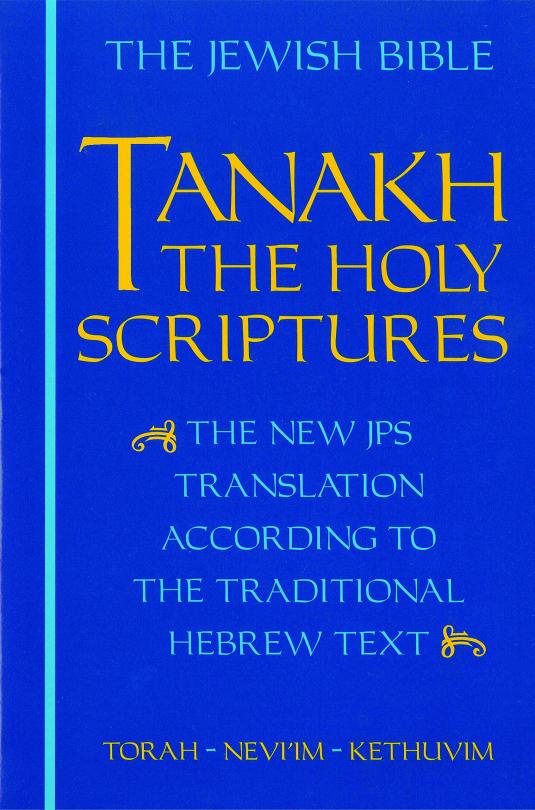
#bible#the holy bible#theholybible#tanakh#tanach#oldtestament#old testament#hebrew bible#hebrewbible#the hebrew bible#judaism#jewish#religion#spirituality#philosophy#jesus#christ#jesus christ#jesuschrist#photo#photos
6 notes
·
View notes
Text
Letter from a disenchanted student of the Divine Principle

Many Unification Church members seem to think people who left the organization are like some kind of lapsed Catholics, but most of those people just recognized Moon’s absurd and contradictory rhetoric had absolutely no relationship to reality – I pointed out many of those obvious contradictions in my previous letter to Rev Moon. Even the vaunted Divine Principle was not his own teaching. Much of it came from a woman called Seong-do Kim whose revelations began in 1923. She stated that Jesus did not come to die (not new because other Christians had taught this previously), she also taught that the fall was a sexual sin (again not new because Jewish scholars suggested this long ago and anyone can recognize the association, even sex shops use a bitten apple to advertise their wares). She also taught about the change of blood lineage through the messiah – thus justifying all the deviant sexual activity involved in the pikareum rituals. Another source was a woman called Chong Deuk-eun who dictated a book called the Principle of Life in 1946-47. It was published in 1958.
The history parallels were taken straight from the teachings of Baek-moon Kim’s Israel Monastery – being the reason they finish in 1917, which was Baek-moon’s birth date rather than 1920 when Moon was born. The final Divine Principle book was composed by a committee guided by Hyo-won Eu with input from Young Oon Kim and various professors. So rather than being a direct revelation, the DP is actually an interesting amalgam of Christian theology, nineteenth century science, Oriental philosophy and shamanism – added to the insights and teachings that were taken from various Korean spiritual groups.
This was why I felt free to approach much of the DP as almost allegorical because the main thing to emphasize was personal spiritual maturity – the development of a loving parental heart. (The real meaning of ‘perfection’.) I never believed that absolute Cain/Abel rubbish spouted by Moon and Japanese leaders. I remember one itinerant worker saying, ‘If my central figure tells me this red dress is blue then it’s blue.’ Absolutely insane – but this is exactly the kind of thing that has been propagated by the Moon family and their minions, especially in Japan, and it leads to all kinds of abuses.
In addition to the DP we also have Rev. Moon’s great blessing theory, whereby through downing a glass of holy wine and being engrafted to his lineage we become capable of conceiving pure offspring, free from original sin. These ‘blessed’ children can then form the core of the heavenly kingdom on earth, of course with the ‘True Parents’ and their children at the absolute center. However, the proof of any pudding is in the eating – regardless of how good the recipe might sound. So let us look at the results, the fruits of the messiah and his teaching.
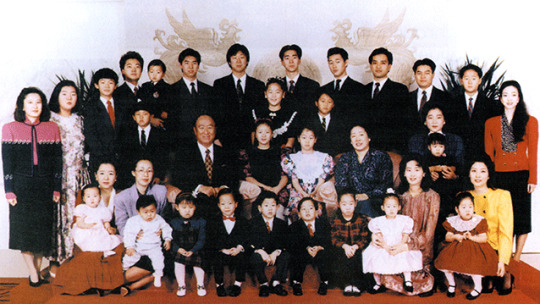
We can start with some of his own blessed children:
Ye Jin – (Divorced.)
Hyo Jin – was a drug addict, I saw him give a sermon one time when he was so stoned he had to hold on to the podium in order to stand up. He punched and kicked his wife, Nansook Hong, watched pornography, walked around with a gun in his pocket and beat up church members. (Divorced.)
In Jin – was forced to resign her position because it became public knowledge about her affairs with two married members and the illegitimate child she had with one of them. (Divorced.)
Un Jin – said clearly on TV that her father was not the messiah, and that the church was just about power and money. (Divorced.)
Hyun Jin, the kind-hearted business expert who wanted to cut the salaries of our church’s jewelry workers by a third – I saw a video of him calling a church leader an arrogant bastard and kicking him as the man knelt before him. No matter what the guy was guilty of, this was just one more example of the violence perpetrated by the Moon family. Which of course was epitomized by Cleopas, the black Zimbabwean supposedly embodying the spirit of Heung Jin, who went around the world viciously beating up men and women, putting some in hospital. He even threatened church members with a pistol. (All of it approved by Rev Moon who laughed at the beatings and had himself used a baseball bat on members.)

Kook Jin – an arms dealer who said Abel wouldn’t have been killed if he’d had a gun. Divorced his wife and had himself re-blessed with a Korean beauty queen. He now has his own group of armed ‘knights’ willing to do whatever he orders. (Divorced.)
Hyung Jin, the heir apparent (according to him), lied about getting a BA from Harvard when he actually attained a lower qualification – and if he thinks the parable of the sower is referring to ‘absolute sex’ I think he needs to go back to Divinity School. His Sanctuary Church now promotes the owning of AR-15 semi-automatic assault rifles, and has ceremonies with participants carrying these lethal weapons while wearing bizarre crowns of bullets. According to one of his recent speeches, all the women of the world are ‘Brides of Christ,’ and he of course is now in that Christ position.
Don’t want to go into details about some of the others as I feel sorry for them.
So this so-called true family demonstrates clearly that there is no difference between blessed children and any others. Rev. Moon said as much in Korea when he was talking about Sammy Park, his illegitimate son. He said, ‘The sons from the concubine are better because there is more passion involved in their conception.’ So much for the value of the blessing.
(Of course Mrs Moon blames the bad behavior of her adult, absolute ruler children on the poor church members, as though they could do anything to control it.)
So now lets look at the practical results of all the members’ sacrifice and offerings:
This Parc One court case (the conflict that began between Kook Jin and Hyun Jin) resulted in at least 700 million dollars of church money going to lawyers and outside companies. This is at a time when Japanese church members were being bled dry; many could not even afford to go to the dentist. (They were commonly referred to as ‘the toothless ones’ in Japan.)
Cheongpyeong – you couldn’t make it up – they were selling apartments in the spirit world! People have to be completely away with the fairies to buy into that. Mrs Hyo Nam Kim (Dae Mo Nim or Hoon Mo Nim) after being denounced as a fraud, walked away with assets worth more than 230 million dollars (including one of the top golf courses in South Korea), so her spiritual real estate business must have been doing very well. It’s as crazy as charging money so that your ancestors can attend workshops with the spirit of Heung Jin, or paying thirty dollars for two bottles of Danjobi shampoo to get evil spirits out of your hair. (This all of course also being done with the consent of Rev Moon.)

Mrs Kim was supposedly channeling Dae Mo Nim, the mother of Hak Ja Han, which was actually a strange choice because Dae Mo Nim and another woman had spent two years in jail for beating a mentally ill youth to death in one of these frenzied ansu sessions (where they beat bad spirits out of people).
That whole Cheongpyeong providence is merely old Korean shamanism, and just because people have spiritual experiences there doesn’t validate what is going on. Something many members don’t realize is that God works to educate and reach people regardless of what religion they are following.
Rev. Moon often praised Korean culture but Korea was a slave society for most of its history. Although the number of slaves had declined during the nineteenth century the institution was not legally banned until 1894, and the system survived in practice until the 1920s. At least one third of the population were slaves in the past, and the children of slaves automatically belonged to their masters – with most wealthy men keeping concubines. The Koreans always had that tradition of the Yangban, or aristocrats, being served by everybody else, even having a caste of sex slaves for that purpose.
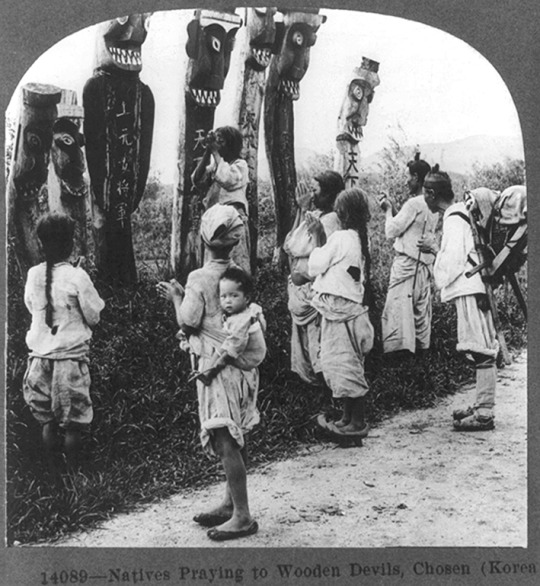
Another tradition was idol worship and shamanism. All this drumming and beating at Cheongpyeong is actually for drawing spirits into people, not driving them out. The disgusting business of putting Moon’s semen and blood into the holy wine is more shamanism. Shamans believe if you can get someone to imbibe your bodily fluids they will come under your control. By the way, Rev Moon’s children used to refer to Mrs Kim and her people as ‘the witches of Cheongpyeong.’ To put this in perspective there are still over 300,000 shamans or ‘mudangs’ plying their trade in Korea.
Conferences. After working on some of them I was shown very clearly that all those big science, arts and other conferences actually had no purpose other than glorifying Rev Moon. He wasn’t at all interested in any results from those meetings, only in how many famous people attended.
About 500 million dollars is donated each year by the Japanese church, but where does it all go? What great world-changing projects do you see it used for? Of what use are all these glorious palaces? The one at Cheongpyeong cost over a thousand million dollars. Just think what good could have been done in the world with such funds. This particular palace is now adorned with giant statues of Hak Ja Han with Jesus kneeling before her and a much diminished figure of Sun Myung Moon in obedient attendance. She has effectively created a new religion centered on herself by changing the basic teachings and proclaiming herself as the Only Begotten Daughter of God, the wife of God, the mother of God and God himself/herself. (What kind of mental gymnastics the present members are doing to believe this utter nonsense is beyond me.)
I know each national church lives in its own little bubble, in effect creating its own version of the Unification society and cherry picking which headquarters’ directions to implement. Each country also seems to hold onto its own view of the ‘messiah,’ effectively editing out anything that does not conform to this ideal. However, with the advent of the Internet this can thankfully no longer be the case.
It is the very core of the Unification Church that needs to be examined. The whole church has been built on lies. Even Rev Moon’s life story is full of falsehoods. Remember that picture of him carrying the man on his back; he let it be known for years that it was him before finally admitting it wasn’t.
The stories about Heungnam – I heard a testimony from one of those early disciples where she went to visit him and found him drinking tea in a nearby village! Chung-hwa Pak had been an officer in the military and was put in charge of the prisoners. He designated which tasks the prisoners should do. He was able to give Moon time off so they could talk together about his beliefs. Moon was not always being worked to death as he later stated.
He said he graduated in electrical engineering at Waseda University in Tokyo, but he actually only attended night classes at a technical high school.
The Church made out that Moon was arrested in North Korea for preaching against communism, but the charges were really for bigamy and adultery. Chong-hwa Kim, the married woman involved, was also jailed. His anti-communist stance came much later.
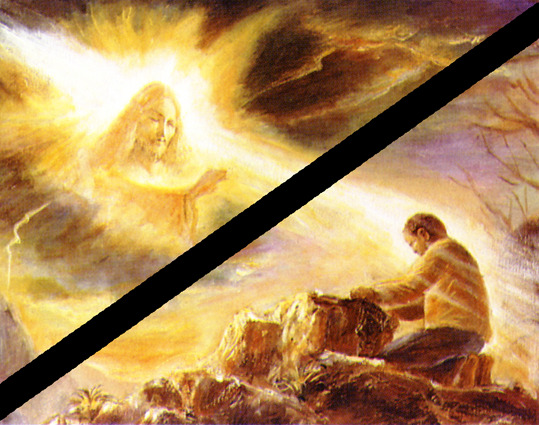
The story about him meeting Jesus on the mountainside is also untrue. It was Seong-do Kim who first told people she’d had these Easter revelations, then Baek-moon Kim claimed them as his, and finally Rev Moon – whose lies gave him away as Easter did not fall on the date he gave for that year. In his most recent account of that meeting he calls Jesus a bastard, and originally taught that Jesus should have had sex with his mother to restore the fall. He also claimed to have met and talked with Buddha, but until his first visit to India he thought Buddha was Chinese.

The Tragedy of the Six Marys. This book described the pikareum, or womb-cleansing, ceremonies conducted during the early years of the Unification Church. For years we were told it was untrue, but before the book came out in Japan they started giving lectures explaining the providential reasons why Moon had to have sex not only with the Six Marys, but also with all the wives of the 36, 72 and even the 124 couples. Some of the members listening to those lectures left the church afterwards so they stopped giving them, but they started them again in Korea from what I heard.
The Israel Monastery was a pikareum church with Baek-moon Kim doing the womb cleansing by having sex with the female members. Another similar one was the Olive Tree Movement started by Tae-Seon Park. This had 300,000 members and the churches had special rooms to practice the pikareum rituals. So there were plenty of examples of this grotesque idea for Rev Moon to draw on.
The holy wine ceremony is a symbolic sexual act, but for the first years of the church Rev Moon actually had sex with the female members. This is the core of the church and it is both vile and ludicrous.
I don’t say these things lightly because I needed plenty of evidence before I believed them, but I know people in both Japan and Korea who attended lectures where this behavior was justified. In America Hyung Jin and Kook Jin have admitted such things happened. It was admitted by Young Oon Kim, Papasan Choi, Chung-Hwa Pak, President Eu’s cousin (Shin-hee Eu), Annie Choi (the mother of Sam Park), Deok-jin Kim and many others. Rev Yong also went around the world giving lectures explaining the dispensational necessity of such sex practices.
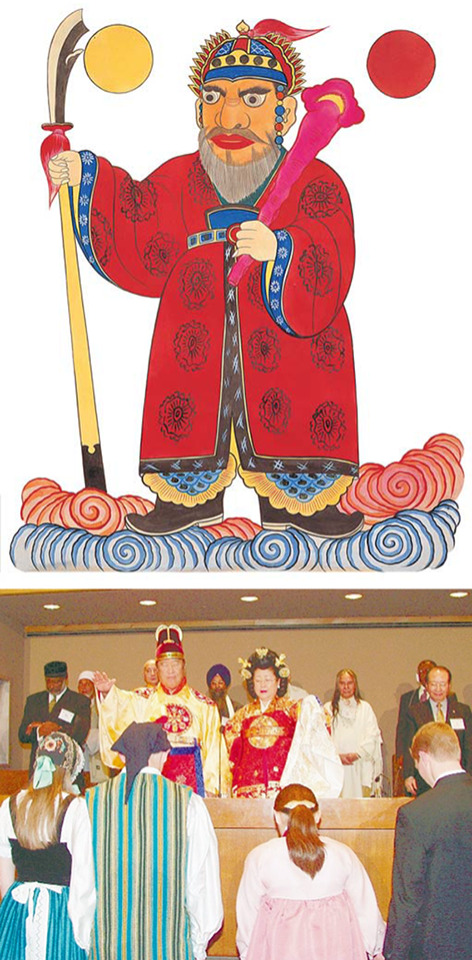
God of Day and God of Night. There used to be a shrine to this primitive Korean god to the east of Seoul. (Moon was incorporating any kind of rubbish into his mythology by the end of his life.)
I could report on even worse activities and crimes but I think this is enough for now. The Divine Principle itself is a wonderful construct, (Hyo-won Eu being something of a genius) the only problem being that it isn’t true. So much of the numerology, four position foundations, triple objective purposes and so on, is actually meaningless. There was no sexual fall and inherited original sin and Satan are non-existent. The history parallels are extremely contrived, and although interesting, prove nothing at all. There are many more aspects of the book that don’t make sense. Some parts of course are helpful, Jesus not coming to die and so on, but none of these are original ideas, so the book certainly doesn’t prove that Moon is the Second Advent.
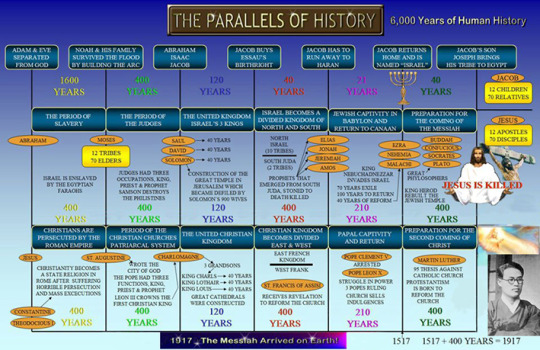
▲ Baek-moon Kim was born in 1917. He devised the parallels of history.
As predicted nothing happened on Foundation Day apart from a few pointless ceremonies. The church leadership knew this would be the case, which is why they were already telling people to prepare for 2020, the 100th anniversary of Moon’s birth. Mrs Moon is emphasizing witnessing now. (Because tithes are an ongoing source of revenue.) She recently told the Japanese wives in Korea that if they don’t do well then their descendants will pay lots of indemnity. She seems to have forgotten what her husband said on October 27, 1999, ‘No more indemnity is needed. The providence of restoration is completed.’
I personally think anyone still teaching the Divine Principle has to examine all of the above, and then ask themselves if they are just helping to propagate a gigantic destructive fraud? Thousands of people have gone through real suffering to enrich Moon and his family. Many of them had their lives ruined by being matched and married to people they could not relate to. It’s hard to believe but Moon’s church even advertised for any Korean men who wanted wives to come to one of those big blessings – just to make the numbers up, although he charged them between two and ten thousand dollars for each purchased bride. He then matched dedicated Japanese sisters to men who weren’t even church members – some of whom were unemployed drunkards or worse. (One of these wives eventually killed her Korean husband after suffering years of abuse.) Again, ask yourself whether these matchings were the action of a loving father, or an evil despot with no concern at all for the happiness and well-being of others?
If members were matched with someone they could love and be happy with, then they were in the minority, as it was mostly a matter of luck. Remember he matched physical brothers and sisters on at least four occasions that I know of, then changed the matching when he was told about it, so it certainly wasn’t God guiding him.
If people want God in their lives all they have to do is invite him in. Knock and the door will be opened. You don’t need to go to God through Moon or anyone else, and heaven is a place for heavenly people, so if you aren’t heavenly then no blessing, white robe or inseminated wine is going to get you in there.
And just to be clear, arrogance and avarice are not heavenly attributes.
I believe anyone who has sincerely tried to serve God and create a better world has certainly not wasted their time, because God will remember their efforts whatever religion they followed, but the Unification Church, FFWPU, or Hak Ja Han’s new name for it ‘Heavenly Parent’s Holy Community,’ is nothing but a despotic money-making, power-seeking, destructive scam that should not be supported in any way.
My apologies people, no jokes this time, I’m too disgusted by the whole sorry mess.
Sloe Gin
______________________________________________
Newsweek on the many Korean messiahs of the 1970s
Hwang Gook-joo and his orgies
The Divine Principle is constructed to control members
Sun Myung Moon’s Theology of the Fall, Tamar, Jesus and Mary
Sun Myung Moon – Restoration through Incest
Shamanism is at the heart of Sun Myung Moon’s church
Japanese member, Ms. K, was forced to marry Korean man she did not like
Sun Myung Moon makes me feel ashamed to be Korean
The Fall of the House of Moon – New Republic
Sun Myung Moon’s secret love child – Mother Jones
Cult Indoctrination – and the Road to Recovery
3 notes
·
View notes
Text
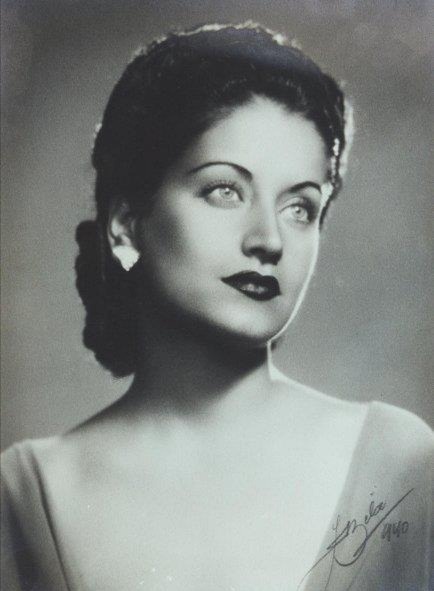
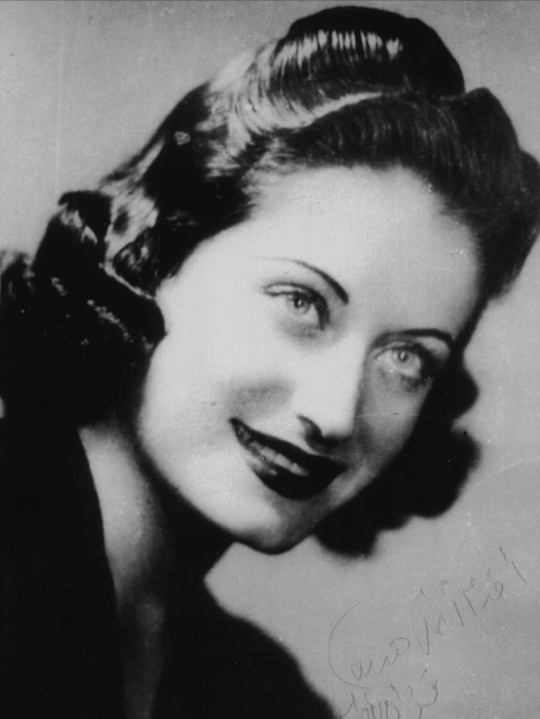
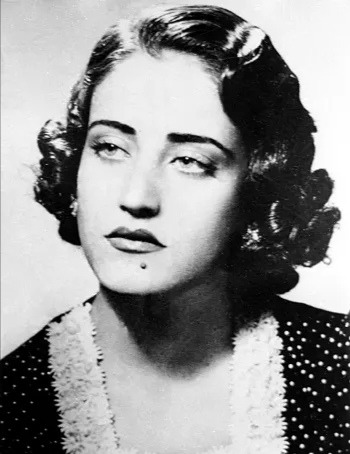
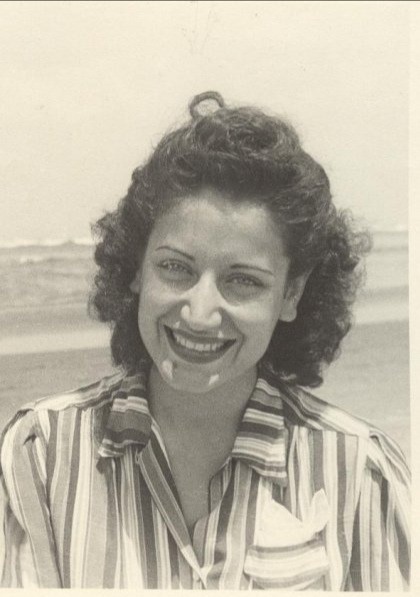
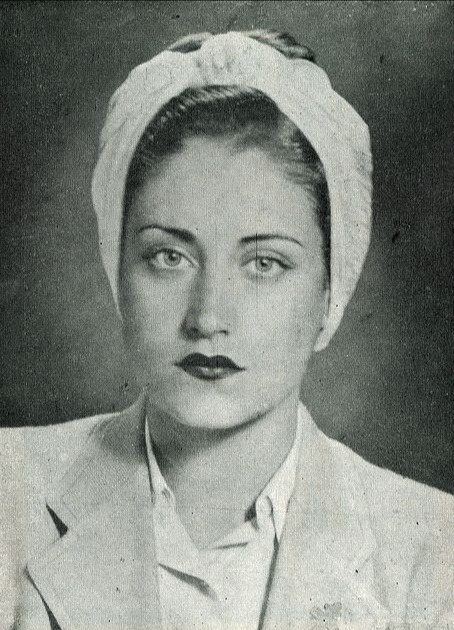
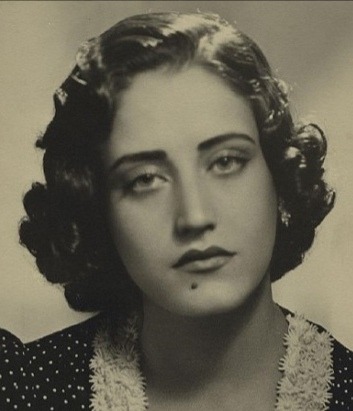
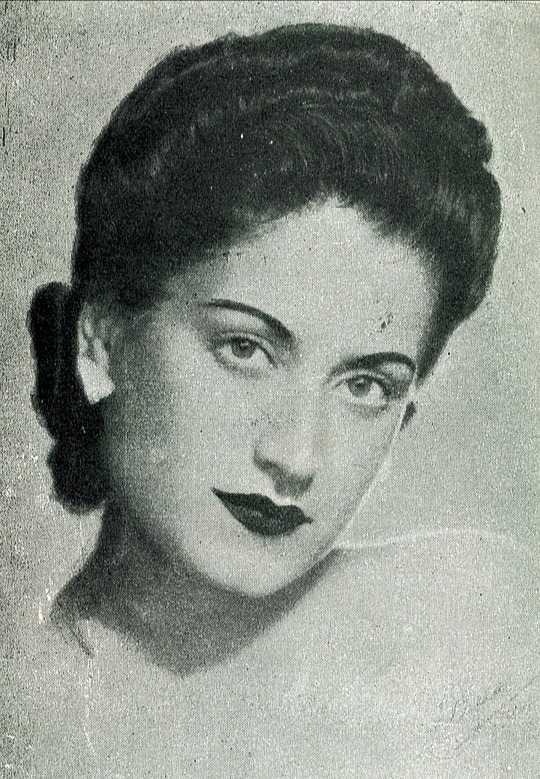
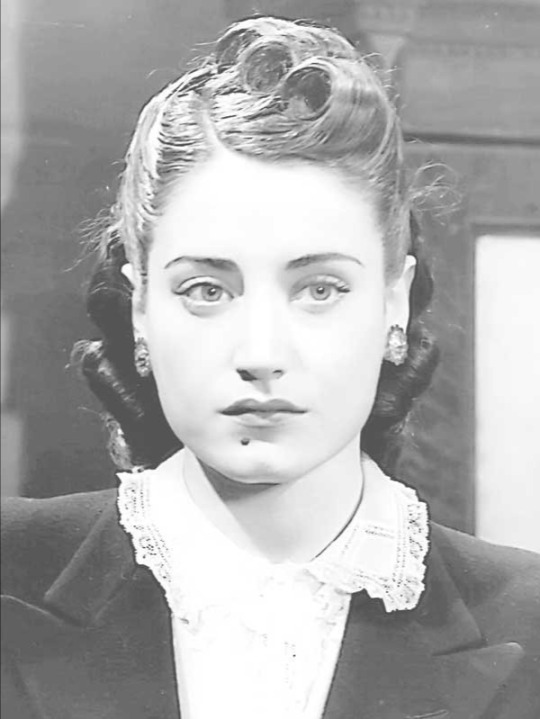
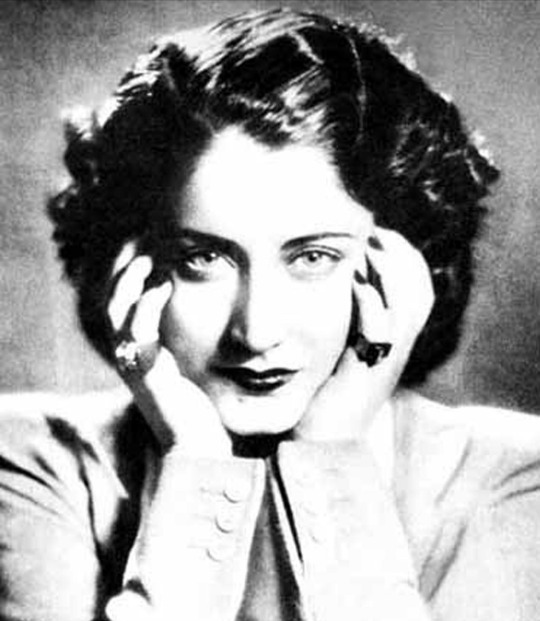

Asmahan (1912/1917-1944).
Syrian singer and actress.
.
She was a Syrian born singer who lived in Egypt. Having immigrated to Egypt at the age of three years old, her family knew the composer Dawood Hosni, and she sang the compositions of Mohamed El Qasabgi and Zakariyya Ahmad. She also sang the compositions of Mohammed Abdel Wahab and her brother Farid al-Atrash, a then rising star musician in his own right. Her voice was one of the few female voices in Arab music world to pose serious competition to that of Umm Kulthum, who is considered to be one of the Arab world's most distinguished singers of the 20th century. Her mysterious death in an automobile accident shocked the public. Journalists spread gossip about her turbulent personal life and an alleged espionage role in World War II.
.
She was an extraordinary songstress endowed with a voice that combined strength, flexibility, uniqueness, and good training.
.
Asmahan was also a woman seduced by the game of politics in time where the whole world lived in extreme animosity. In fact she contributed to changing the map of the Middle East following World War II; she attempted to deal with the members of the British, French and German intelligence services along with the Jewish Agency in Palestine simultaneously, and thought she could outwit them, paying dearly for her connections.
.
Asmahan was married three times while dozens of men, including Egyptians, Arabs and foreigners, fell in love with her. She lived in extremes: a heavy drinker and heavy smoker, she enjoyed a luxurious life while her many relations were intertwined with those that harmed her.
She tried to commit suicide twice and was subjected to two assassination attempts. She eventually drowned in an accident, the circumstances of which remain unclear to this date.
.
Asmahan's older brother, Fuad, and other Druze relatives considered a career in entertainment for a girl to be disgraceful. Her choices and career left both her relatives and Syrian Druze society furious.
.
She married her cousin Hassan al-Atrash in 1933, then Egyptian director Ahmed Badrkhan and her final marriage was to another Egyptian director, Ahmed Badrkhan. She had a daughter with Hassan.
.
Famous songs:
Ya habibi taala
Ya Touyour
Ahwa
Layali el unse fi vienna
Ayoha naimo
.
Movies:
Victory of Youth
Passion and Revenge
#Asmahan#Syrian history#Egyptian history#women history#women in history#Ww2#early 20th century#beauty#Singer#Syrian singer#History#history crush#history hottie#history nerd#history lover#historical crush#historical babes#historical hottie#historical figure#historical#Farid al atrash
137 notes
·
View notes
Text
Joseph A. Harriss, The Elusive Marc Chagall, Smithsonian Magazine (December 2003)
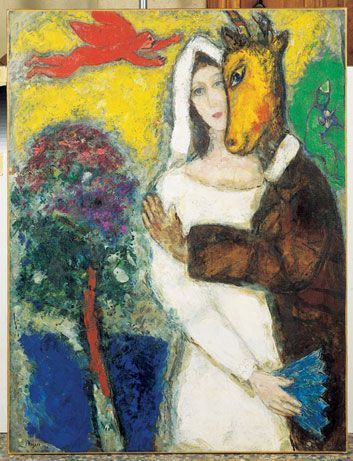
With his wild and whimsical imagery, the Russian-born artist bucked the trends of 20th-century art
David McNeil fondly remembers the day in the early 1960s his father took him to a little bistro on Paris’ Île St. Louis, the kind of place where they scrawl the menu in white letters on the mirror behind the bar, and masons, house painters, plumbers and other workingmen down hearty lunches along with vin ordinaire. Wearing a beret, a battered jacket and a coarse, checkered shirt, his father— then in his mid-70s—fit in perfectly. With conversation flowing easily among the close-set tables, one of the patrons looked over at the muscular, paint-splotched hands of the man in the beret. “Working on a place around here?” he asked companionably. “Yeah,” replied McNeil’s father, the artist Marc Chagall, as he tucked into his appetizer of hard-boiled egg and mayonnaise. “I’m redoing a ceiling over at the Opéra.”
Chagall, the Russian-born painter who went against the current of 20th-century art with his fanciful images of blue cows, flying lovers, biblical prophets and green-faced fiddlers on roofs, had a firm idea of who he was and what he wanted to accomplish. But when it came to guarding his privacy, he was a master of deflection. Sometimes when people approached to ask if he was that famous painter Marc Chagall, he would answer, “No,” or more absurdly, “I don’t think so,” or point to someone else and say slyly, “Maybe that’s him.” With his slanting, pale-blue eyes, his unruly hair and the mobile face of a mischievous faun, Chagall gave one biographer the impression that he was “always slightly hallucinating.” One of those who knew him best, Virginia Haggard McNeil, David’s mother and Chagall’s companion for seven years, characterized him as “full of contradictions—generous and guarded, naïve and shrewd, explosive and secret, humorous and sad, vulnerable and strong.”
Chagall himself said he was a dreamer who never woke up. “Some art historians have sought to decrypt his symbols,” says Jean-Michel Foray, director of the Marc Chagall Biblical Message Museum in Nice, “but there’s no consensus on what they mean. We cannot interpret them because they are simply part of his world, like figures from a dream.” Pablo Picasso, his sometime friend and rival (“What a genius, that Picasso,” Chagall once joked. “It’s a pity he doesn’t paint”), marveled at the Russian’s feeling for light and the originality of his imagery. “I don’t know where he gets those images. . . . ” said Picasso. “He must have an angel in his head.”
Throughout his 75-year career, during which he produced an astounding 10,000 works, Chagall continued to incorporate figurative and narrative elements (however enigmatic) into his paintings. His warm, human pictorial universe, full of personal metaphor, set him apart from much of 20th-century art, with its intellectual deconstruction of objects and arid abstraction. As a result, the public has generally loved his work, while the critics were often dismissive, complaining of sentimentality, repetition and the use of stock figures.
A major retrospective of Chagall’s unique, often puzzling images was recently on view at the San Francisco Museum of Modern Art, following a highly acclaimed run at the Grand Palais in Paris. The first comprehensive exhibition of Chagall’s paintings since 1985 brought together more than 150 works from all periods of his career, many never before seen in the United States, including cloth-and-paper collages from the private collection of his granddaughter Meret Meyer Graber. The exhibition, says Foray, the chief organizer of the show, “offered a fresh opportunity to appreciate Chagall as the painter who restored to art the elements that modern artists rejected, such as allegory and narrative—art as a comment on life. Today he is coming back strong after a period of neglect, even in his home country.” Retrospectives are planned for 2005 at the Museum of Russian Art in St. Petersburg and at the State Tretiakov Gallery in Moscow.
Movcha (Moses) Chagal was, as he put it, “born dead” on July 7, 1887, in the Belorussian town of Vitebsk, near the Polish border. His distraught family pricked the limp body of their firstborn with needles to try to stimulate a response. Desperate, they then took the infant outside and put him in a stone trough of cold water. Suddenly the baby boy began to whimper. With that rude introduction to life, it’s no wonder that Marc Chagall, as he later chose to be known in Paris, stuttered as a boy and was subject to fainting. “I was scared of growing up,” he told Virginia McNeil. “Even in my twenties I preferred dreaming about love and painting it in my pictures.”
Chagall’s talent for drawing hardly cheered his poor and numerous family, which he, as the eldest of nine children, was expected to help support. His father, Khatskel-Mordechai Chagal, worked in a herring warehouse; his mother, Feiga- Ita Chernina, ran a small grocery store. Both nominally adhered to Hasidic Jewish religious beliefs, which forbade graphic representation of anything created by God. Thus Chagall grew up in a home devoid of images. Still, he pestered his mother until she took him to an art school run by a local portraitist. Chagall, in his late teens, was the only student who used the vivid color violet.Apious uncle refused to shake his hand after he began painting figures.
For all his subsequent pictorial reminiscing about Vitebsk, Chagall found it stifling and provincial—“a strange town, an unhappy town, a boring town,” he called it in his memoirs. In 1906, at age 19, he wangled a small sum of money from his father and left for St. Petersburg, where he enrolled in the drawing school of the Imperial Society for the Protection of Fine Arts. But he hated classical art training. “I, poor country lad, was obliged to acquaint myself thoroughly with the wretched nostrils of Alexander of Macedonia or some other plaster imbecile,” he recalled. The meager money soon ran out, and although he made a few kopecks retouching photographs and painting signs, he sometimes collapsed from hunger. His world broadened in 1909 when he signed up for an art class in St. Petersburg taught by Leon Bakst, who, having been to Paris, carried an aura of sophistication. Bakst indulged Chagall’s expressive, unconventional approach to painting and dropped names, exotic to the young man’s ears, such as Manet, Cézanne and Matisse. He spoke of painting cubes and squares, of an artist who cut off his ear.
“Paris!” Chagall wrote in his autobiography. “No word sounded sweeter to me!” By 1911, at age 24, he was there, thanks to a stipend of 40 rubles a month from a supportive member of the Duma, Russia’s elective assembly, who had taken a liking to the young artist. When he arrived, he went directly to the Louvre to look at the famous works of art there. In time he found a room at an artists’ commune in a circular, three-story building near Montparnasse called La Ruche (The Beehive). He lived frugally. Often he’d cut a herring in half, the head for one day, the tail for the next. Friends who came to his door had to wait while he put on his clothes; he painted in the nude to avoid staining his only outfit. At La Ruche, Chagall rubbed shoulders with painters like Fernand Léger, Chaim Soutine, Amedeo Modigliani and Robert Delaunay. True to his nature as a storyteller, however, he seemed to have more in common with such writers as French poet Guillaume Apollinaire, who described Chagall’s work as “supernatural.” Another friend, Blaise Cendrars, a restless, knockabout writer, penned a short poem about Chagall: “Suddenly he paints / He grabs a church and paints with a church / He grabs a cow and paints with a cow.”
Many consider Chagall’s work during his four-year stay in Paris his most boldly creative. Reconnoitering the then-prevalent trends of Cubism and Fauvism, he absorbed aspects of each into his own work. There was his Cubist-influenced Temptation (Adam and Eve); the disconcerting Introduction, with a seven-fingered man holding his head under his arm; and the parti-colored Acrobat, showing Chagall’s fondness for circus scenes. At La Ruche he also painted his explosive Dedicated to My Fiancée, which he tossed off in a single night’s feverish work and later submitted to a major Paris exhibition. It took some artful persuasion on his part to convince the show’s organizers that the topsy-turvy mix of hands, legs and a leering bull’s head was not, as they contended, pornographic.
Returning to Vitebsk in 1914 with the intention of staying only briefly, Chagall was trapped by the outbreak of World War I. At least that meant spending time with his fiancée, Bella Rosenfeld, the beautiful, cultivated daughter of one of the town’s wealthiest families. Bella had won a gold medal as one of Russia’s top high-school students, had studied in Moscow and had ambitions to be an actress. But she had fallen for Chagall’s strange, almond-shaped eyes and often knocked on his window to bring him cakes and milk. “I had only to open the window of my room and blue air, love and flowers entered with her,” Chagall later wrote. Despite her family’s worries that she would starve as the wife of an artist, the pair married in 1915; Chagall was 28, Bella, 23. In his 1914- 18 Above the Town (one of his many paintings of flying lovers), he and Bella soar blissfully above Vitebsk.
In 1917 Chagall embraced the Bolshevik Revolution. He liked that the new regime gave Jews full citizenship and no longer required them to carry passports to leave their designated region. And he was pleased to be appointed commissar for art in Vitebsk, where he started an art school and brought in avant-garde teachers. But it soon became clear that the revolutionaries preferred abstract art and Socialist Realism— and how, they wondered, did the comrade’s blue cows and floating lovers support Marxism-Leninism? Giving up his job as commissar in 1920, Chagall moved to Moscow, where he painted decorative panels for the State Jewish Chamber Theater. But ultimately unhappy with Soviet life, he left for Berlin in 1922 and settled in Paris a year and a half later along with Bella and their 6-year-old daughter, Ida.
In Paris, a new door opened for Chagall when he met the influential art dealer Ambroise Vollard, who commissioned him to illustrate an edition of the poetic classic the Fables of La Fontaine. Chauvinistic French officials cried scandal over the choice of a Russian Jew, a mere “Vitebsk sign painter,” to illustrate a masterpiece of French letters. But that blew over, and Chagall went on to do a series of resonant illustrations of the Bible for Vollard.
Increasingly alarmed by Nazi persecution of the Jews, Chagall made a strong political statement on canvas in 1938 with his White Crucifixion. Then 51 and in his artistic prime, he por- trayed the crucified Christ, his loins covered with a prayer shawl, as a symbol of the suffering of all Jews. In the painting, a synagogue and houses are in flames, a fleeing Jew clutches a Torah to his breast, and emigrants try to escape in a rudimentary boat. Not long after, in June 1941, Chagall and his wife boarded a ship for the United States, settling in New York City. The six years Chagall spent in America were not his happiest. He never got used to the pace of New York life, never learned English. “It took me thirty years to learn bad French,” he said, “why should I try to learn English?” One of the things he did enjoy was strolling through Lower Manhattan, buying strudel and gefilte fish, and reading Yiddish newspapers. His palette during these years often darkened to a tragic tone, with depictions of a burning Vitebsk and fleeing rabbis. When Bella, his muse, confidante and best critic, died suddenly in 1944 of a viral infection at age 52, “everything turned black,” Chagall wrote.
After weeks of sitting in his apartment on Riverside Drive immersed in grief, tended to by his daughter, Ida, then 28 and married, he began to work again. Ida found a French-speaking English woman, Virginia McNeil, to be his housekeeper. A diplomat’s daughter, and bright, rebellious and cosmopolitan, McNeil had been born in Paris and raised in Bolivia and Cuba, but had recently fallen on hard times. She was married to John McNeil, a Scottish painter who suffered from depression, and she had a 5-year-old daughter, Jean, to support. She was 30 and Chagall 57 when they met, and before long the two were talking painting, then dining together. Afew months later Virginia left her husband and went with Chagall to live in High Falls, New York, a village in the Catskills. They bought a simple wooden house with an adjoining cottage for him to use as a studio.
Though Chagall would do several important public works in the United States—sets and costumes for a 1942 American Ballet Theatre production of Tchaikovsky’sAleko and a 1945 version of Stravinsky’s Firebird, and later large murals for Lincoln Center and stained-glass windows for the United Nations headquarters and the Art Institute of Chicago—he remained ambivalent about America. “I know I must live in France, but I don’t want to cut myself off from America,” he once said. “France is a picture already painted. America still has to be painted. Maybe that’s why I feel freer there. But when I work in America, it’s like shouting in a forest. There’s no echo.” In 1948 he returned to France with Virginia, their son, David, born in 1946, and Virginia’s daughter. They eventually settled in Provence, in the hilltop town of Vence. But Virginia chafed in her role, as she saw it, of “the wife of the Famous Artist, the charming hostess to Important People,” and abruptly left Chagall in 1951, taking the two children with her. Once again the resourceful Ida found her father a housekeeper— this time in the person of Valentina Brodsky, a 40- year-old Russian living in London. Chagall, then 65, and Vava, as she was known, soon married.
The new Mrs. Chagall managed her husband’s affairs with an iron hand. “She tended to cut him off from the world,” says David McNeil, 57, an author and songwriter who lives in Paris. “But he didn’t really mind because what he needed most was a manager to give him peace and quiet so he could get on with his work. I never saw him answer a telephone himself. After Vava took over, I don’t think he ever saw his bank statements and didn’t realize how wealthy he was. He taught me to visit the Louvre on Sunday, when it was free, and he always picked up all the sugar cubes on the table before leaving a restaurant.” McNeil and his half sister, Ida, who died in 1994 at age 78, gradually found themselves seeing less of their father. But to all appearances Chagall’s married life was a contented one, and images of Vava appear in many of his paintings.
In addition to canvases, Chagall produced lithographs, etchings, sculptures, ceramics, mosaics and tapestries. He also took on such demanding projects as designing stainedglass windows for the synagogue of the Hadassah-HebrewUniversityMedicalCenter in Jerusalem. His ceiling for the Paris Opéra, painted in 1963-64 and peopled with Chagall angels, lovers, animals and Parisian monuments, provided a dramatic contrast to the pompous, academic painting and decoration in the rest of the Opéra.
“He prepared his charcoal pencils, holding them in his hand like a little bouquet,” McNeil wrote of his father’s working methods in a memoir that was published in France last spring. “Then he would sit in a large straw chair and look at the blank canvas or cardboard or sheet of paper, waiting for the idea to come. Suddenly he would raise the charcoal with his thumb and, very fast, start tracing straight lines, ovals, lozenges, finding an aesthetic structure in the incoherence. Aclown would appear, a juggler, a horse, a violinist, spectators, as if by magic. When the outline was in place, he would back off and sit down, exhausted like a boxer at the end of a round.”
Some critics said he drew badly. “Of course I draw badly,” Chagall once said. “I like drawing badly.” Perhaps worse, from the critics’ point of view, he did not fit easily into the accepted canon of modernity. “Impressionism and Cubism are foreign to me,” he wrote. “Art seems to me to be above all a state of soul. . . . Let them eat their fill of their square pears on their triangular tables!”
Notes veteran art critic Pierre Schneider, “Chagall absorbed Cubism, Fauvism, Surrealism, Expressionism and other modern art trends incredibly fast when he was starting out. But he used them only to suit his own aesthetic purposes. That makes it hard for art critics and historians to label him. He can’t be pigeonholed.”
When he died in Saint Paul de Vence on March 28, 1985, at 97, Chagall was still working, still the avant-garde artist who refused to be modern. That was the way he said he wanted it: “To stay wild, untamed . . . to shout, weep, pray.”
15 notes
·
View notes